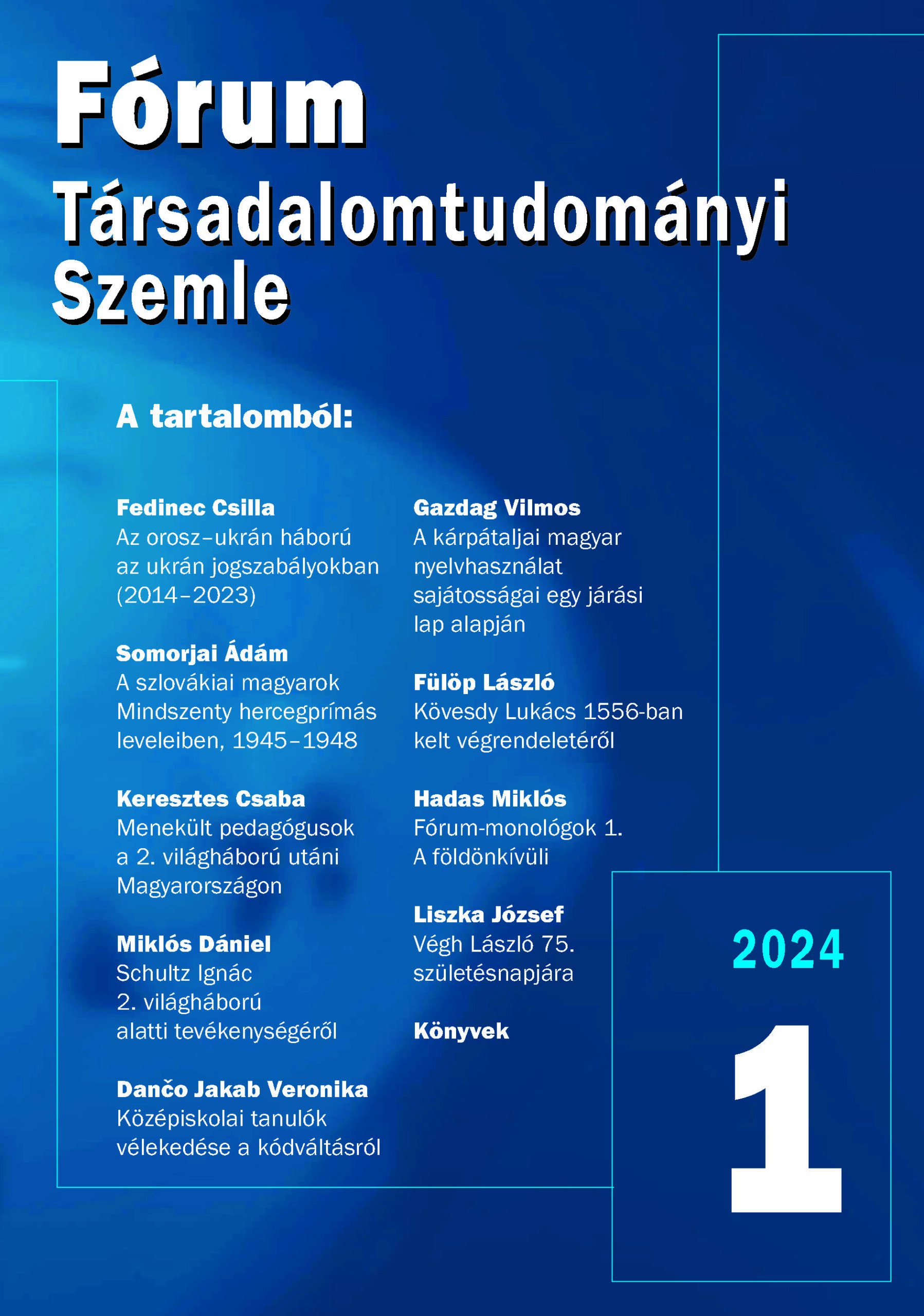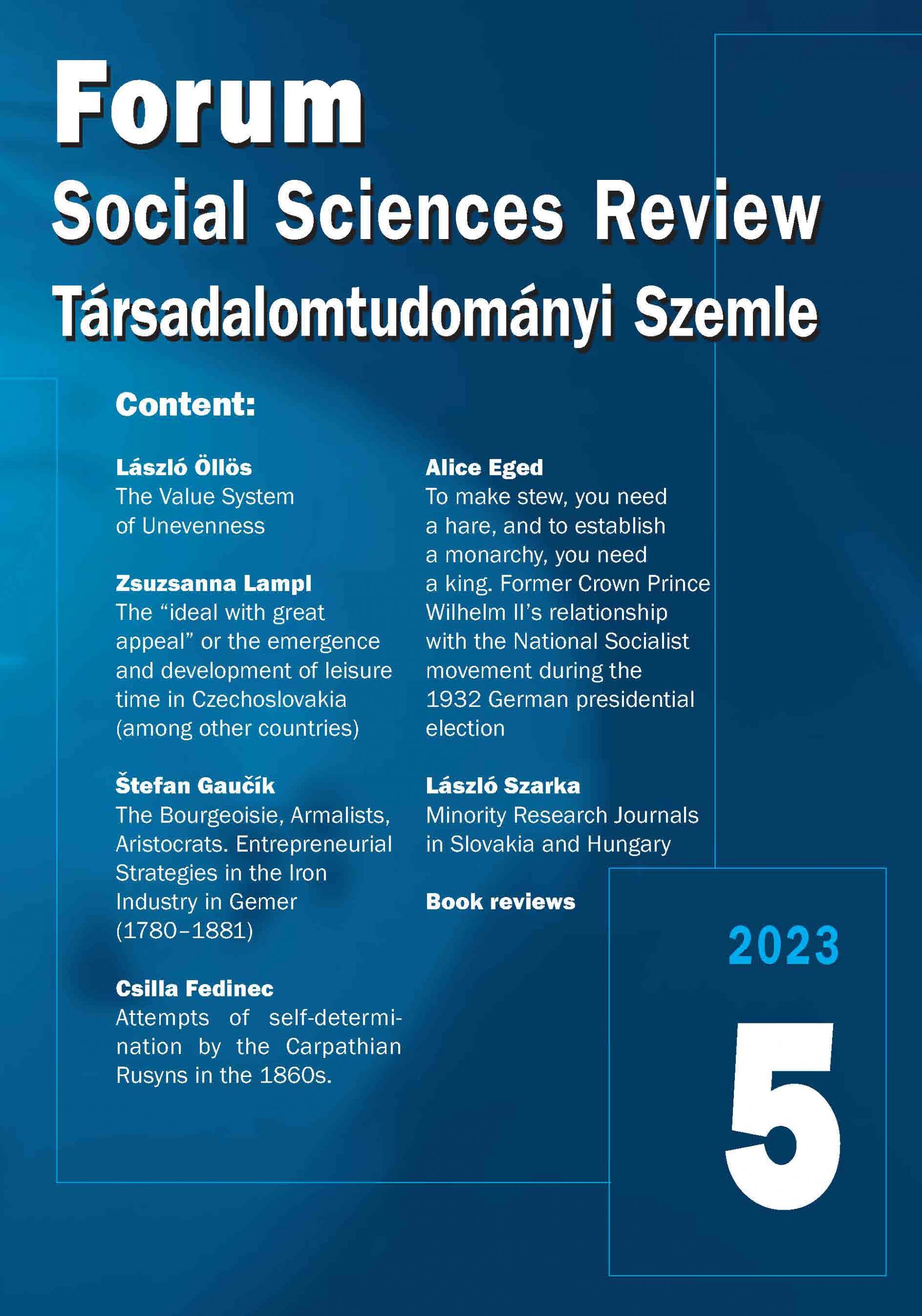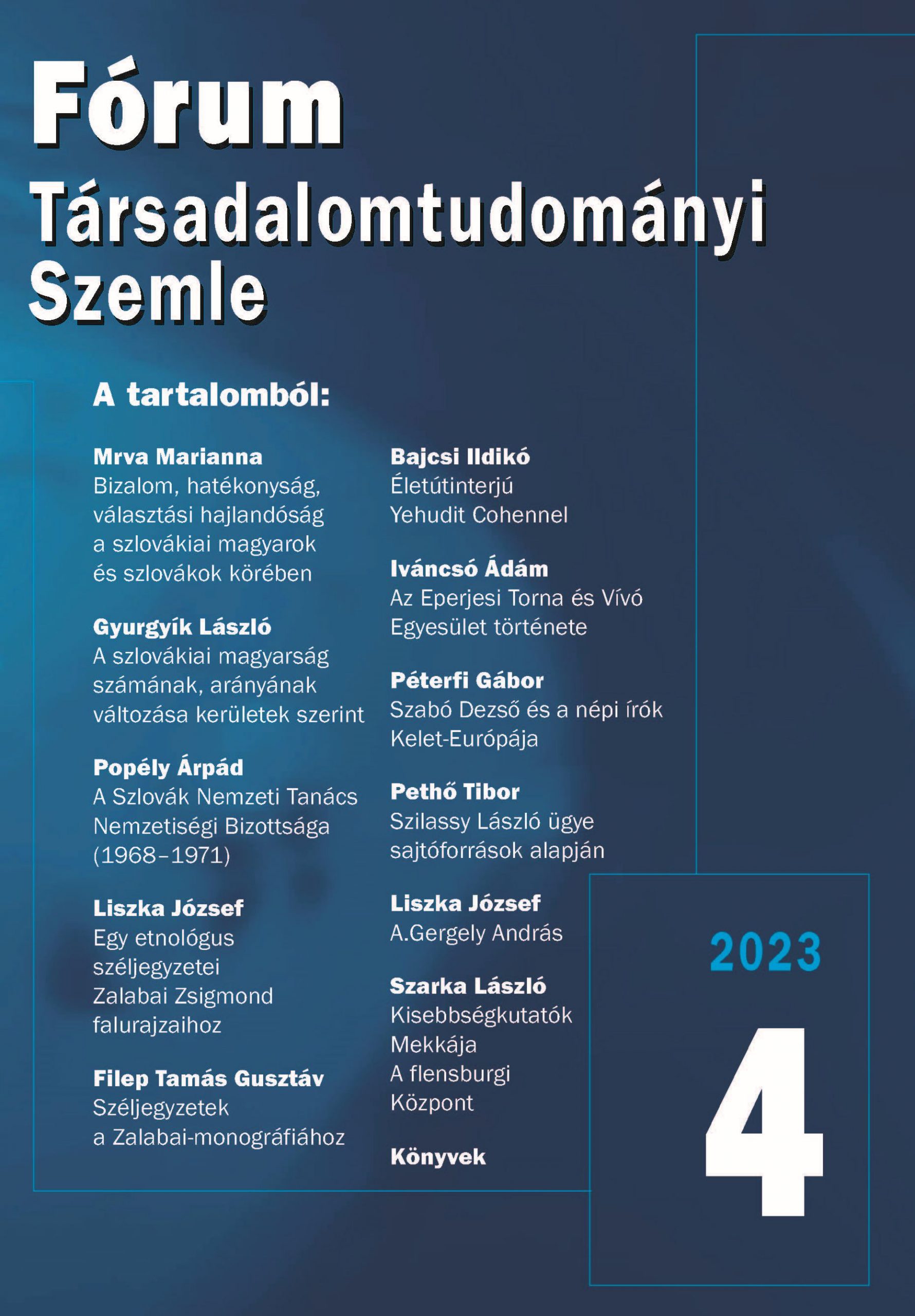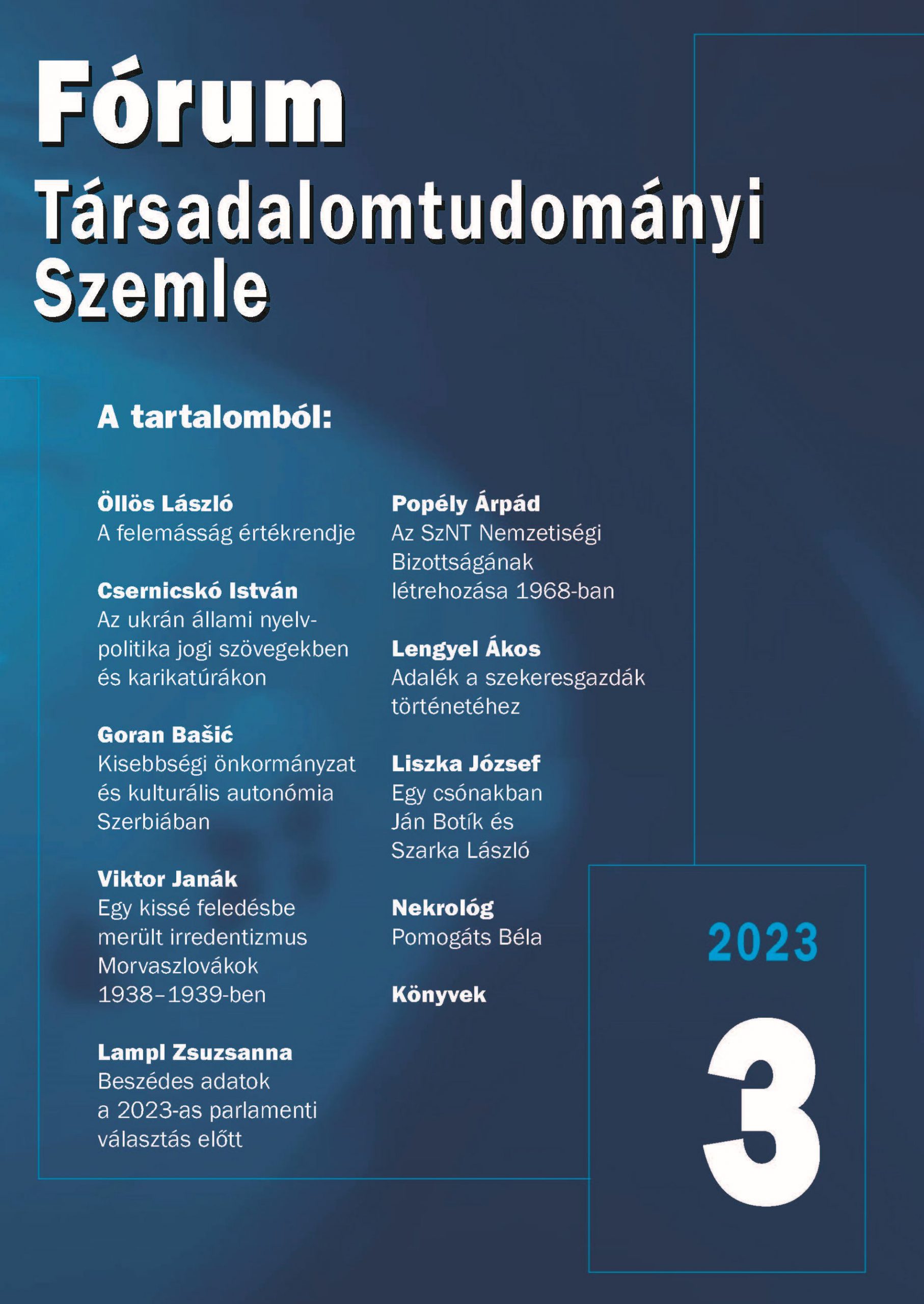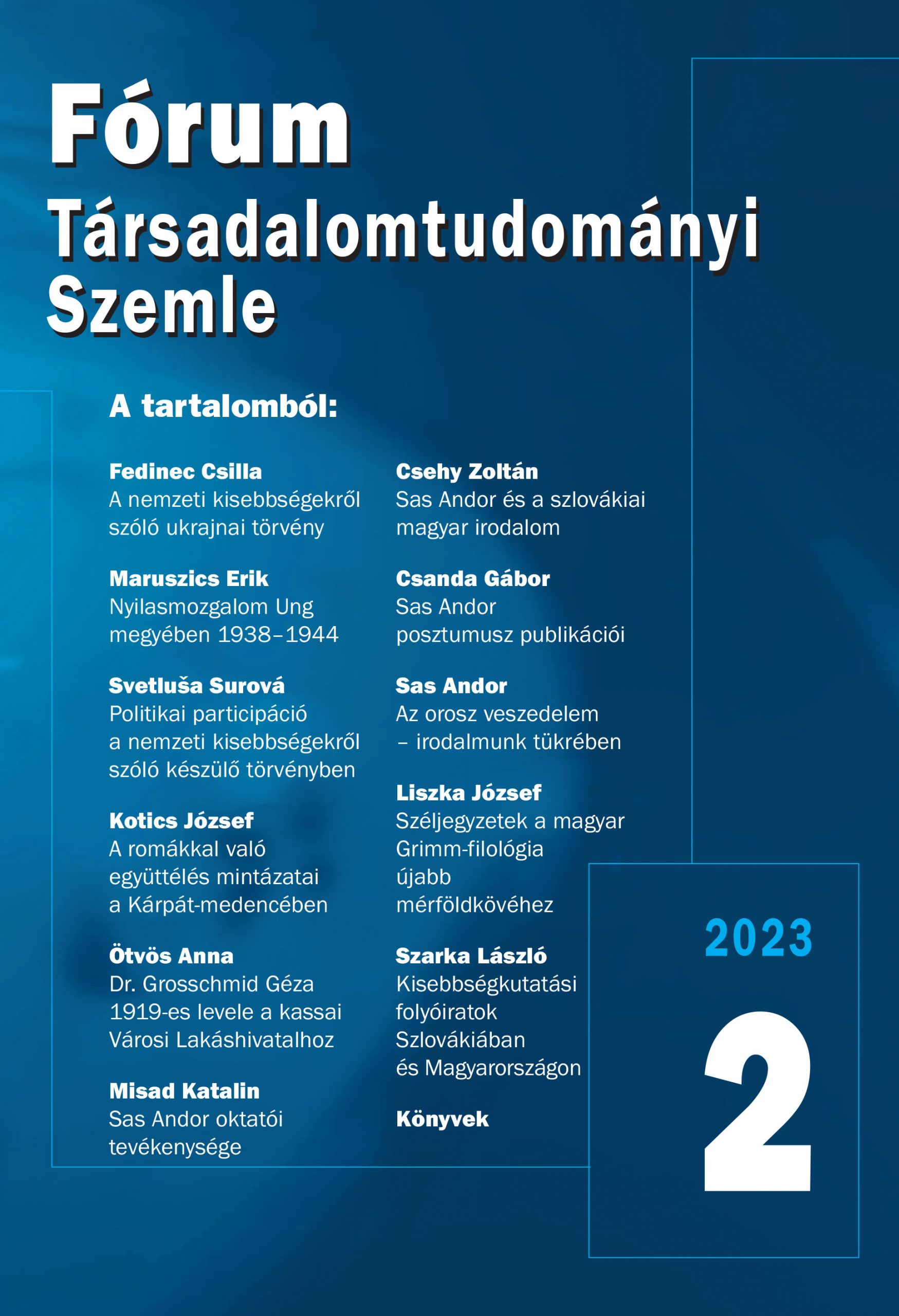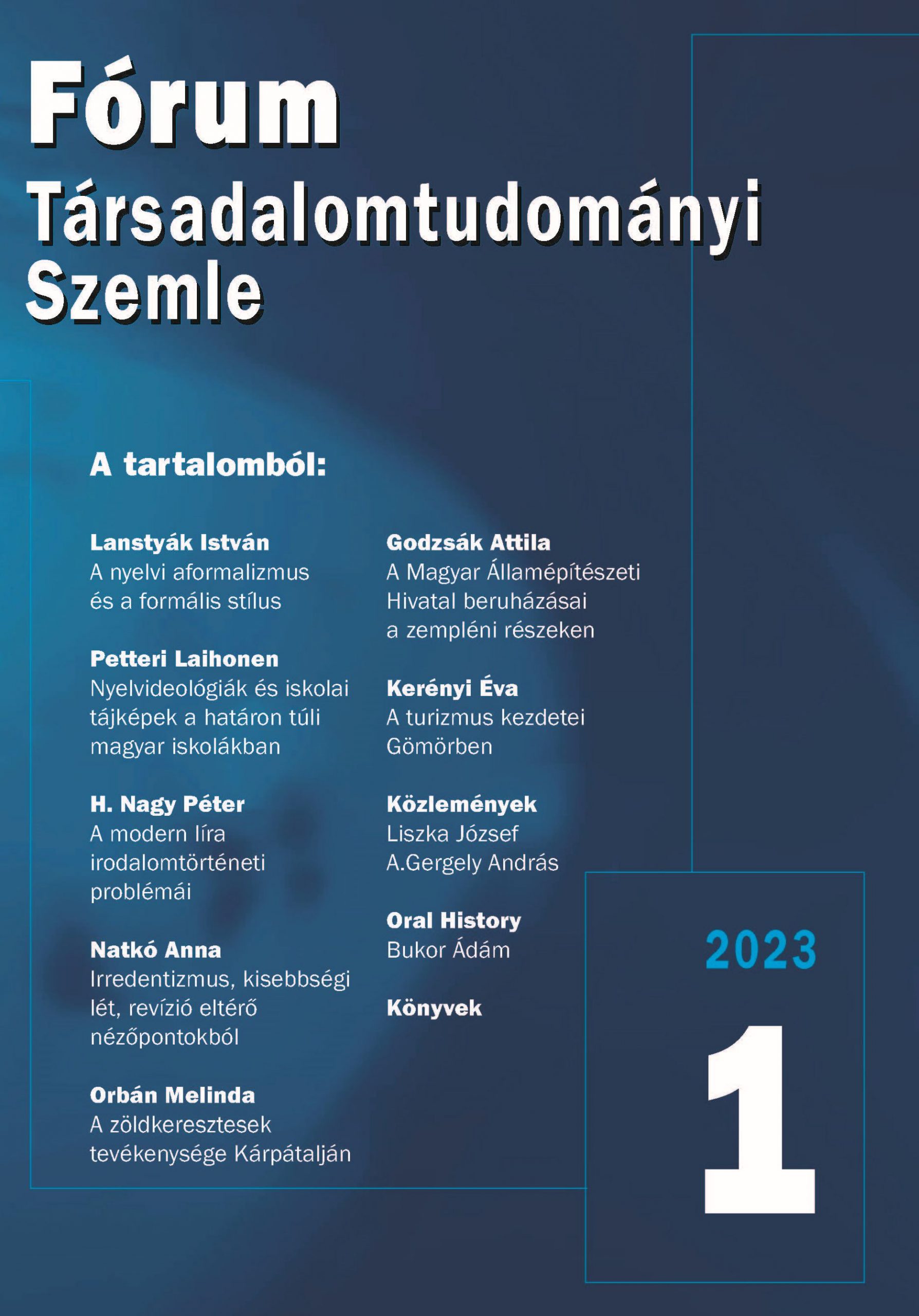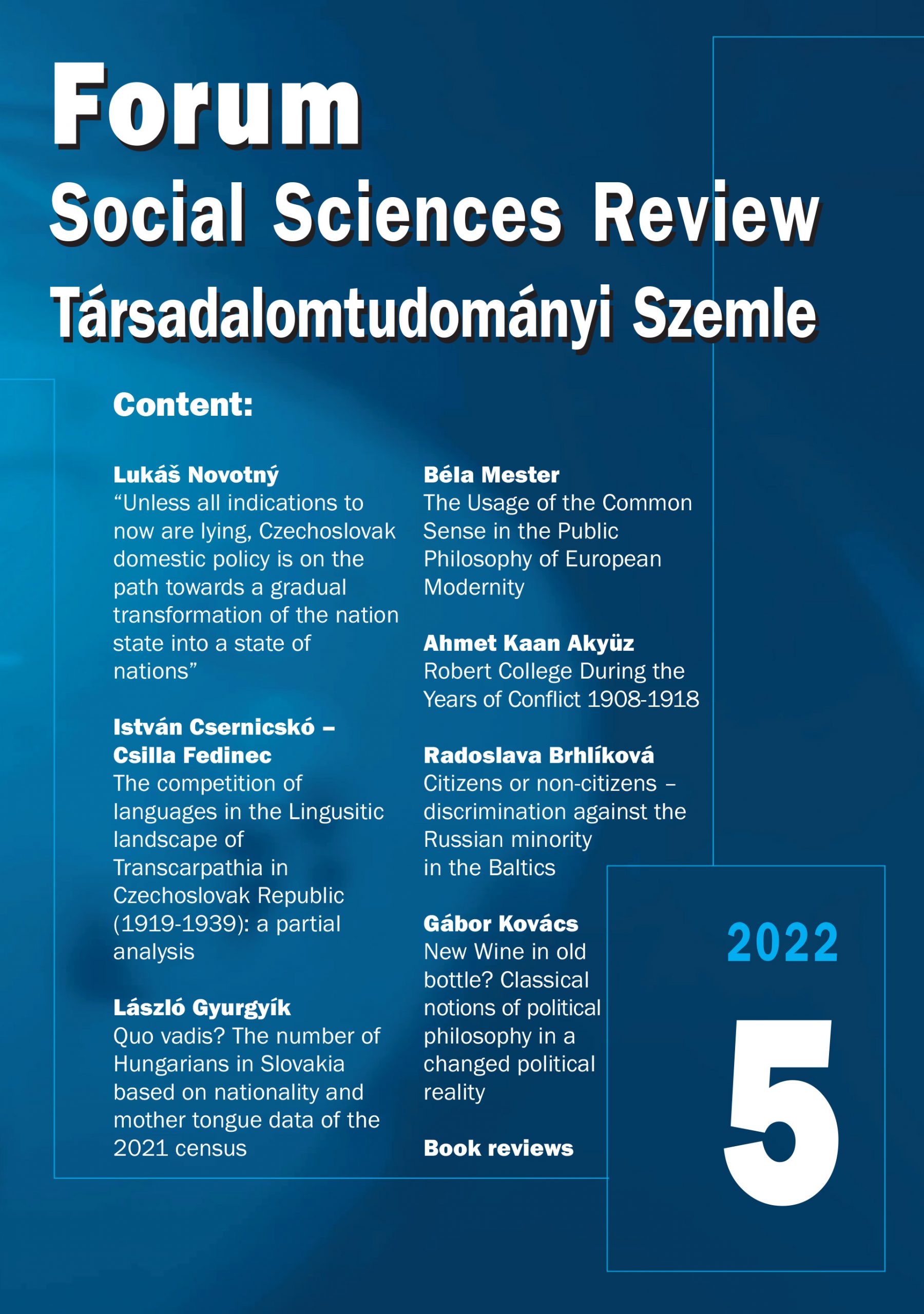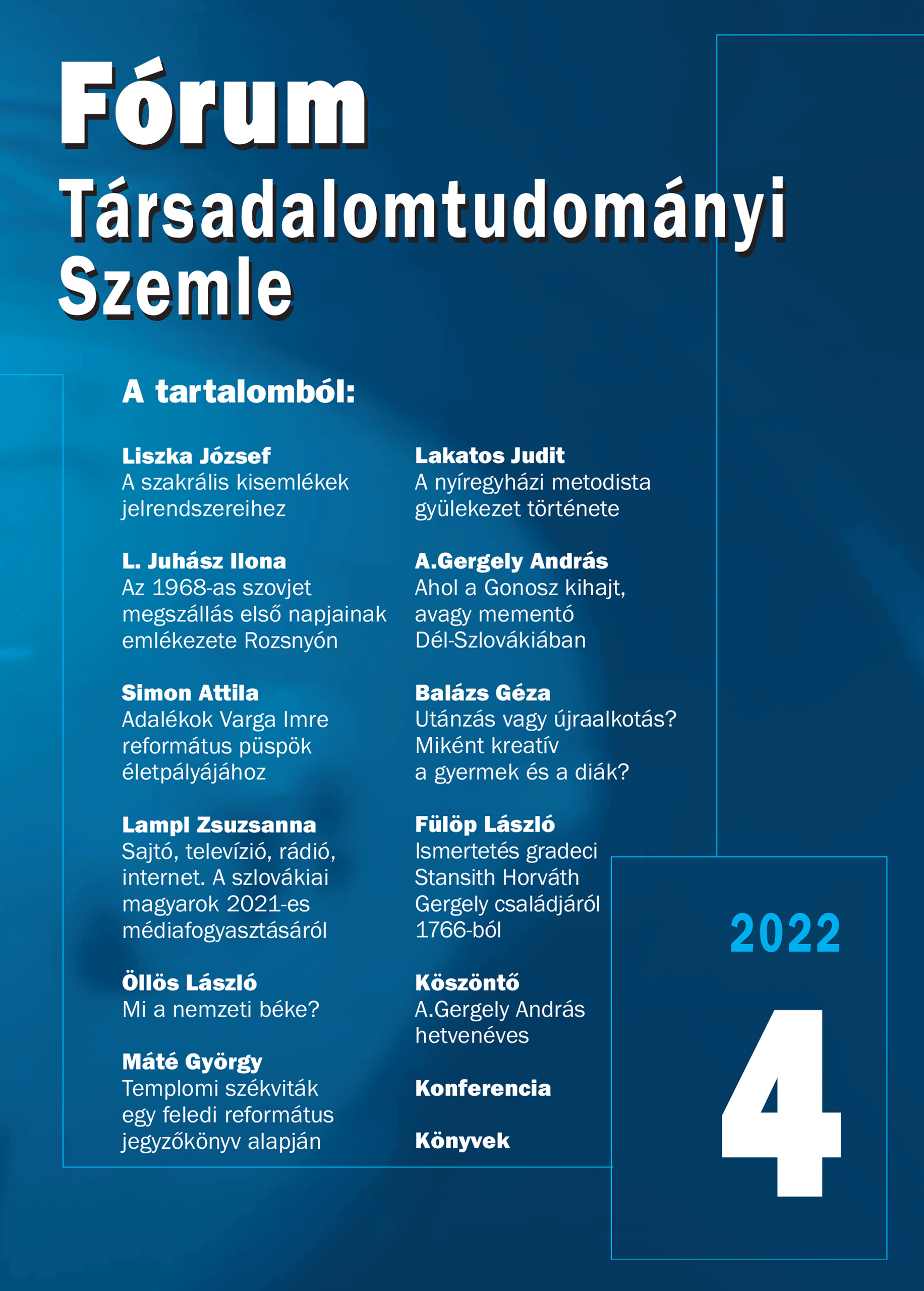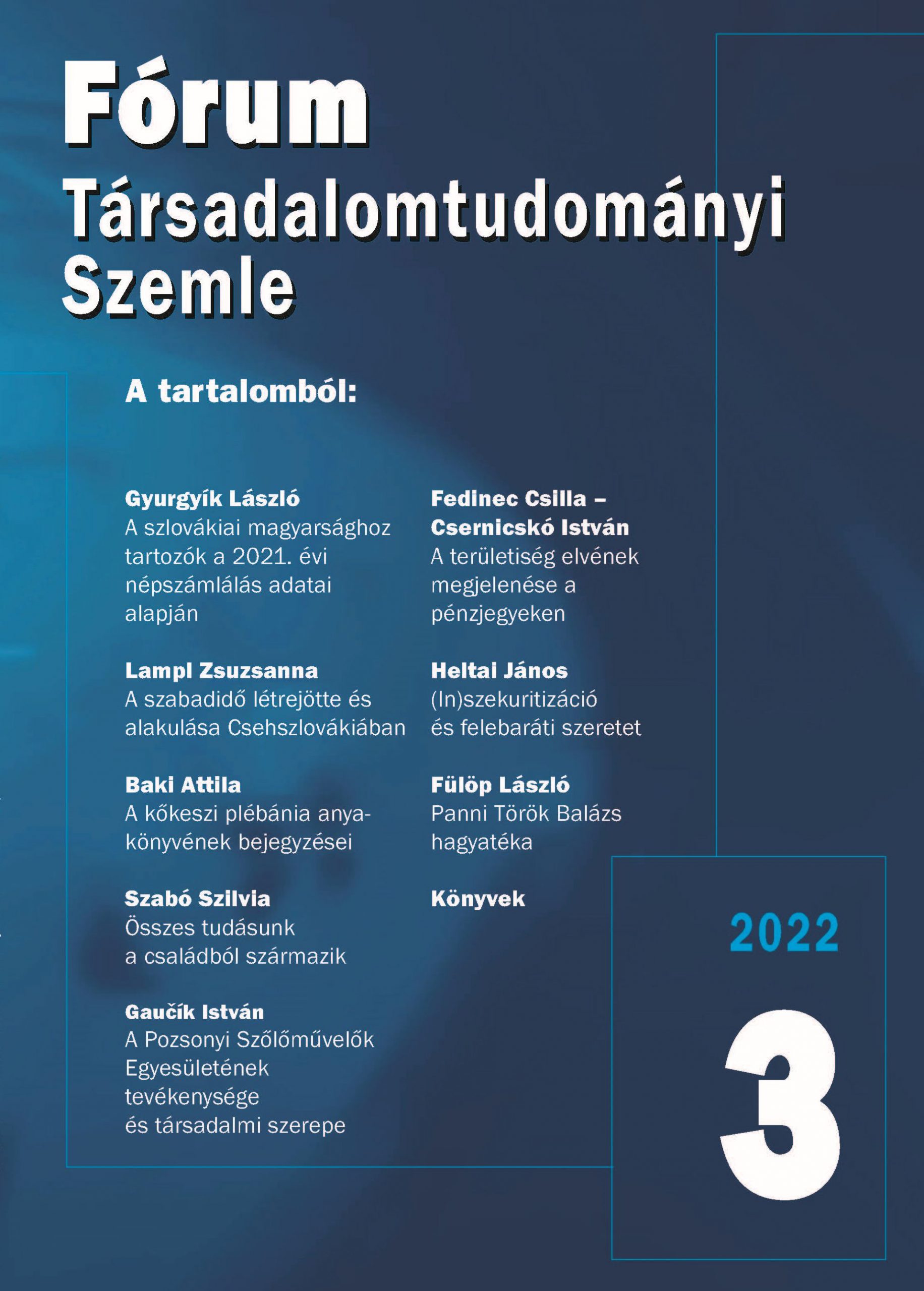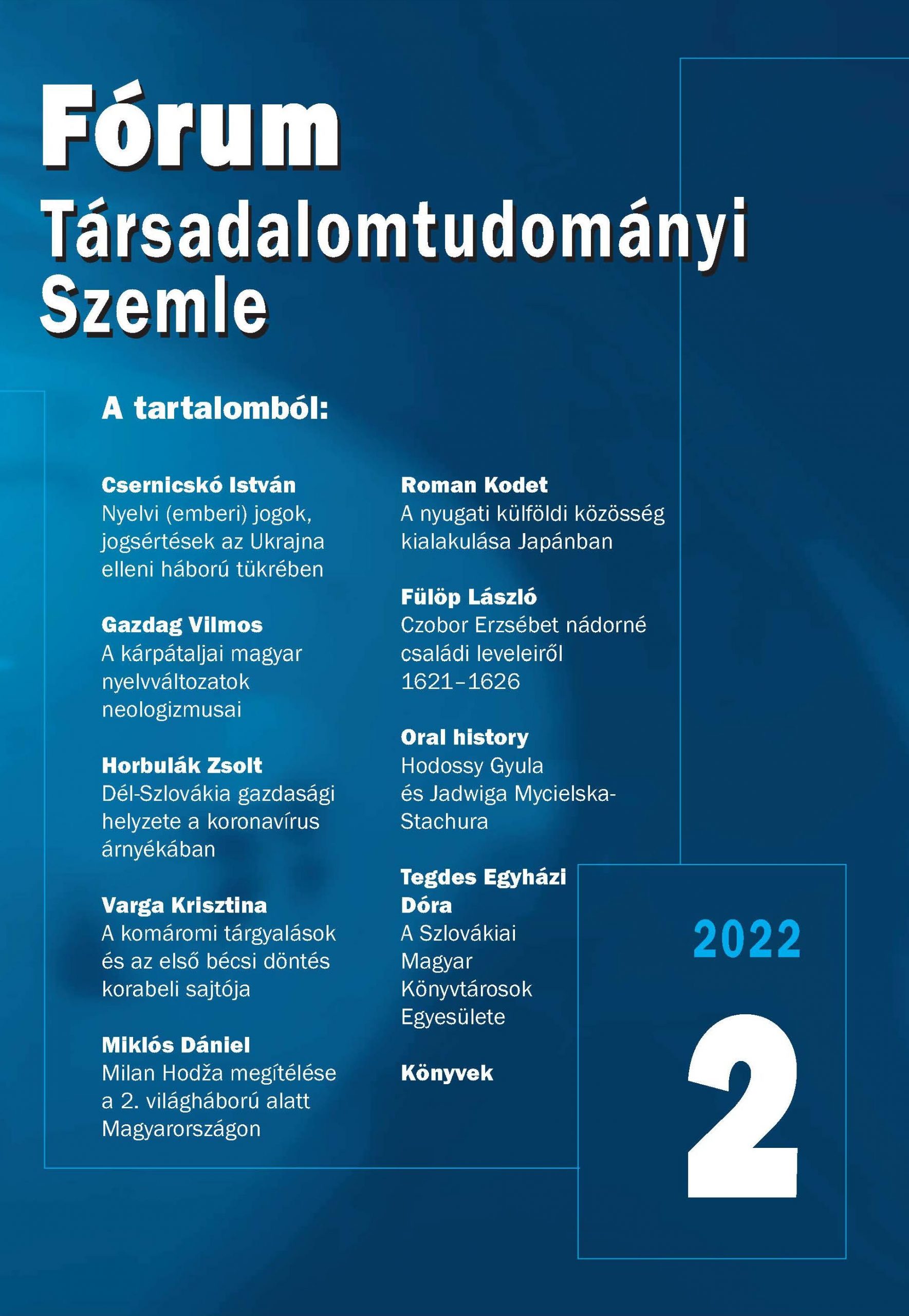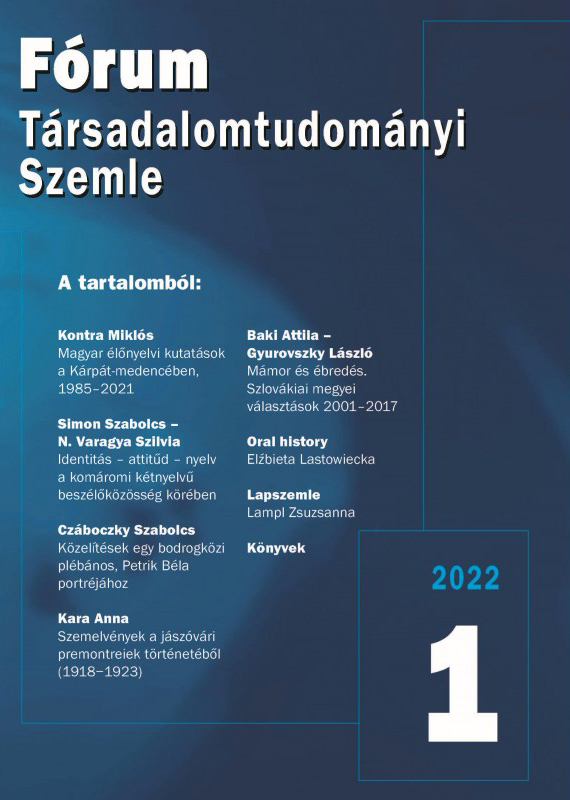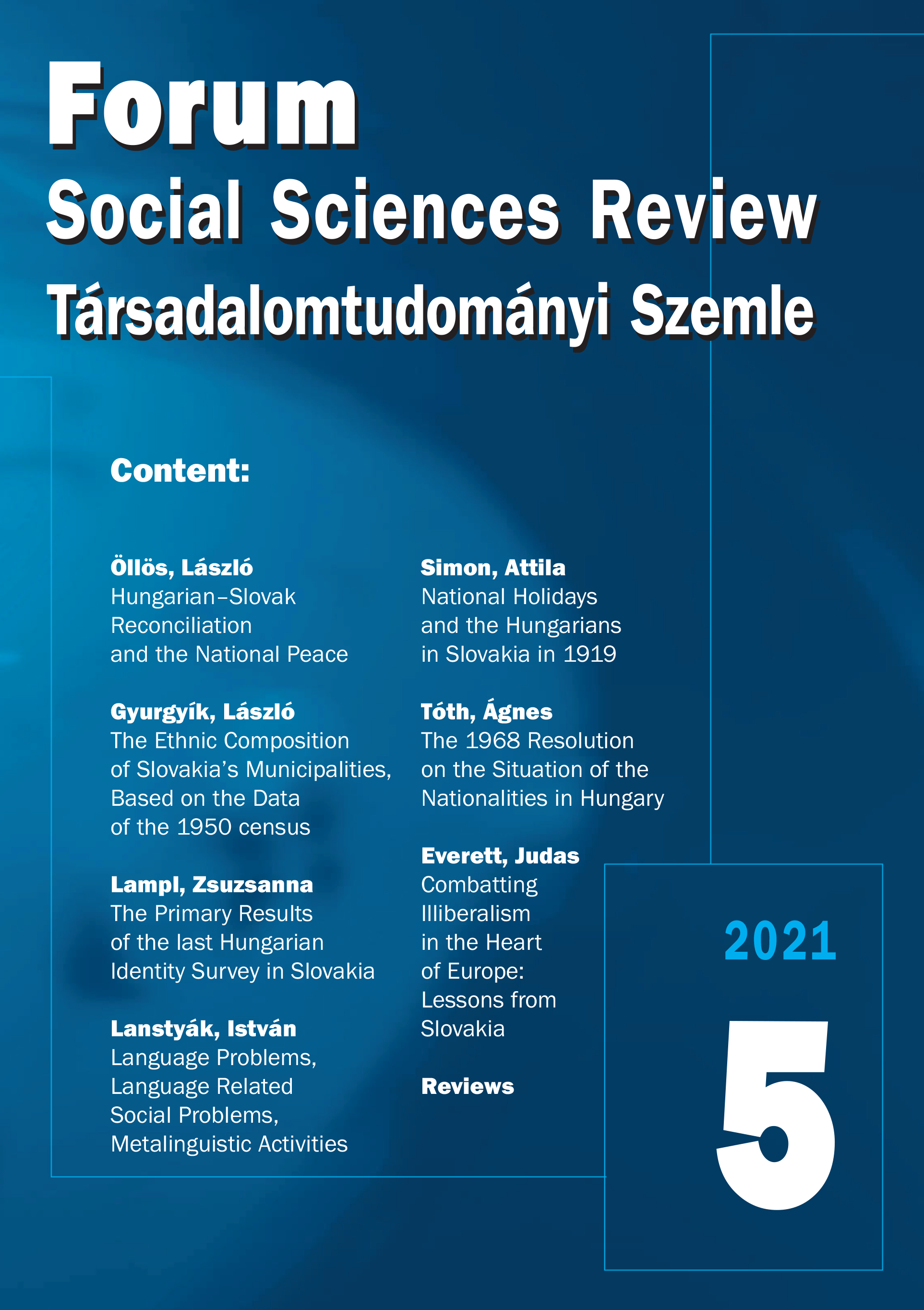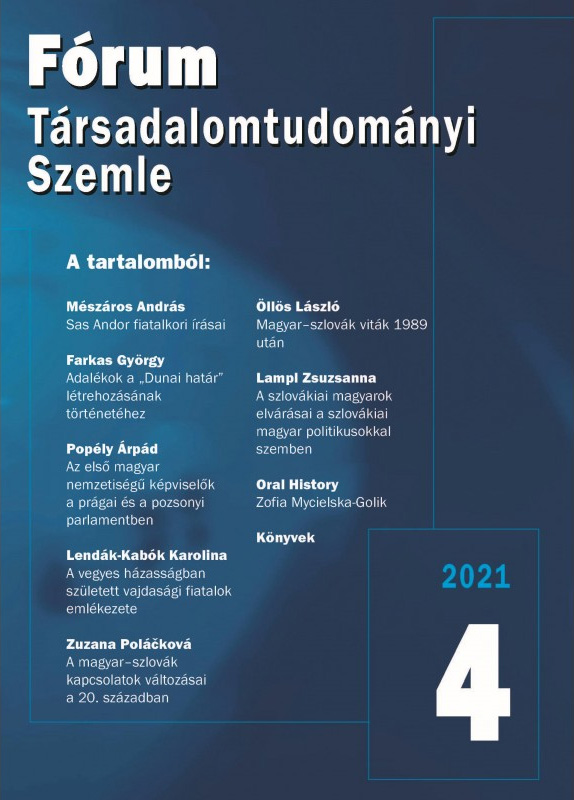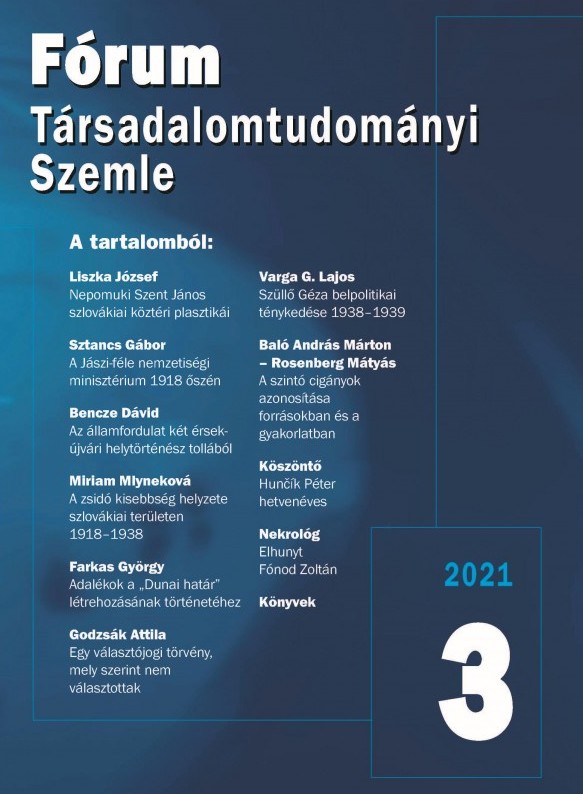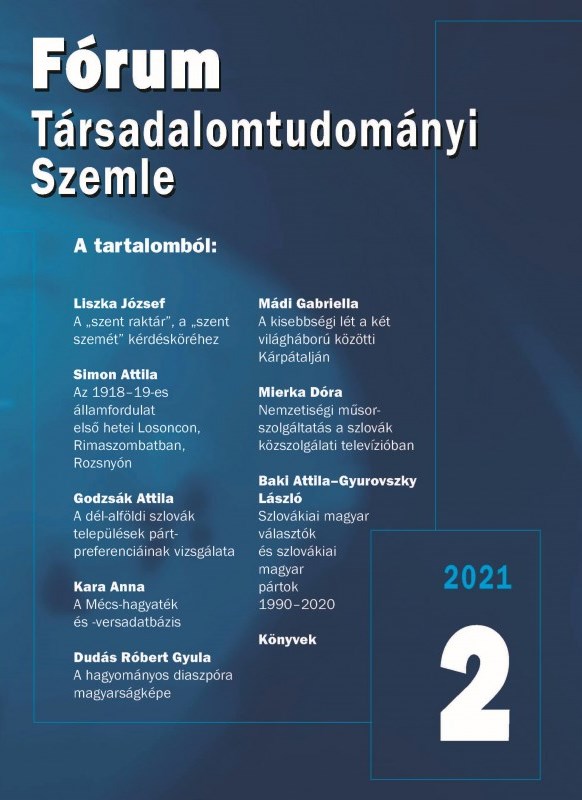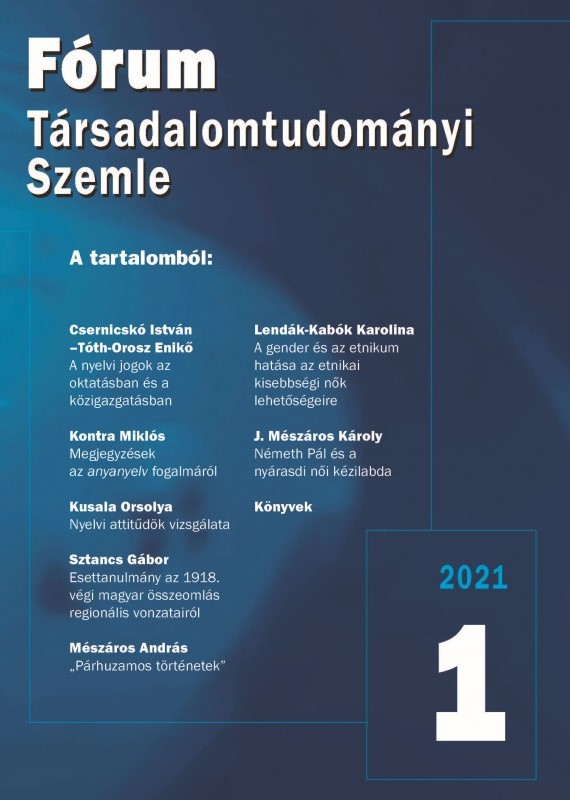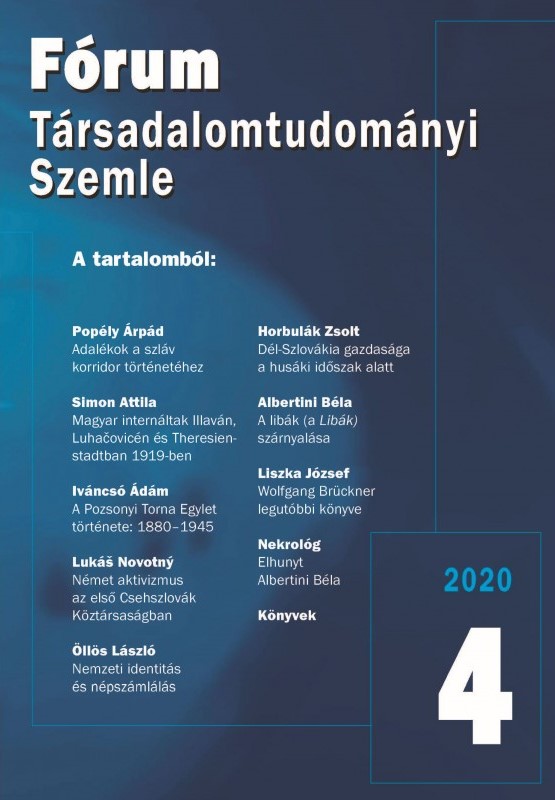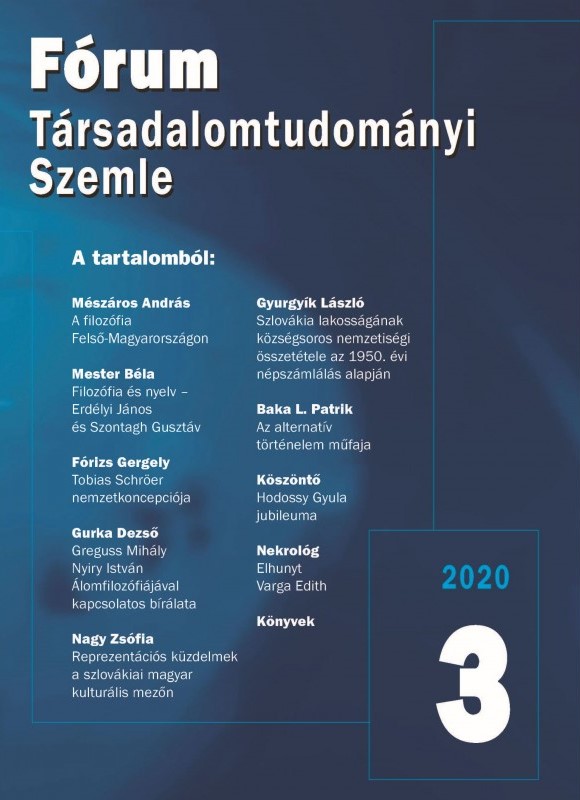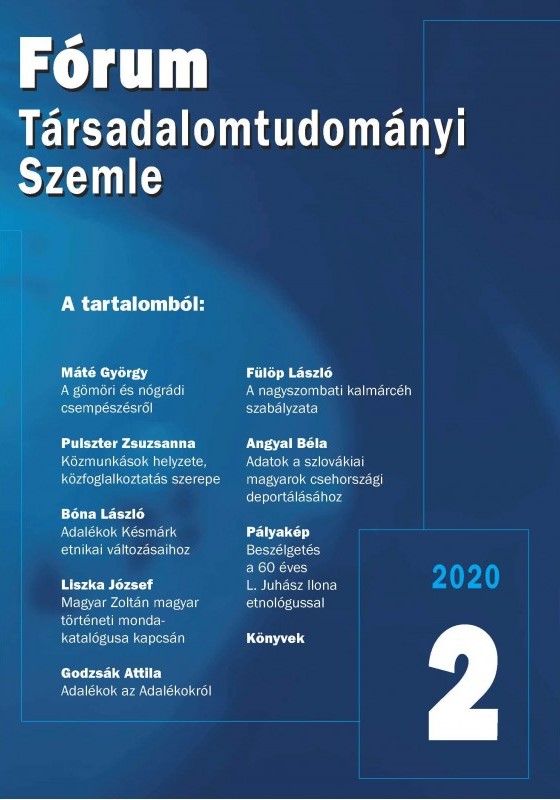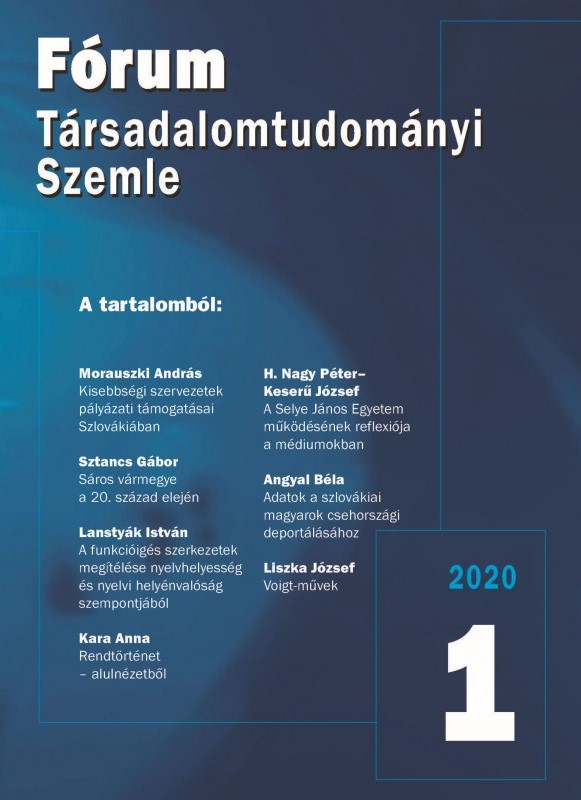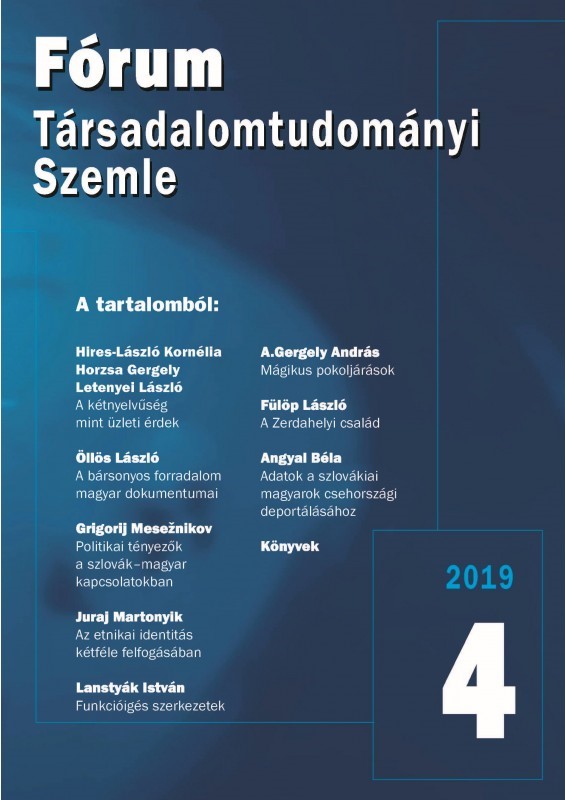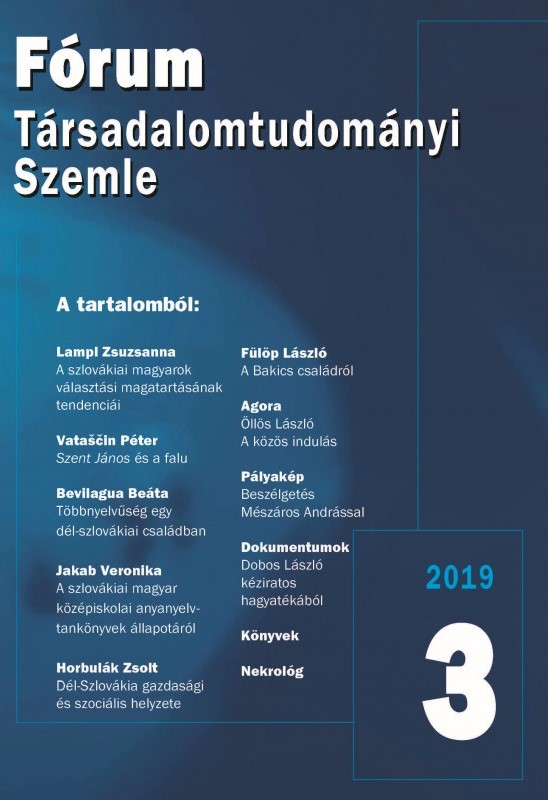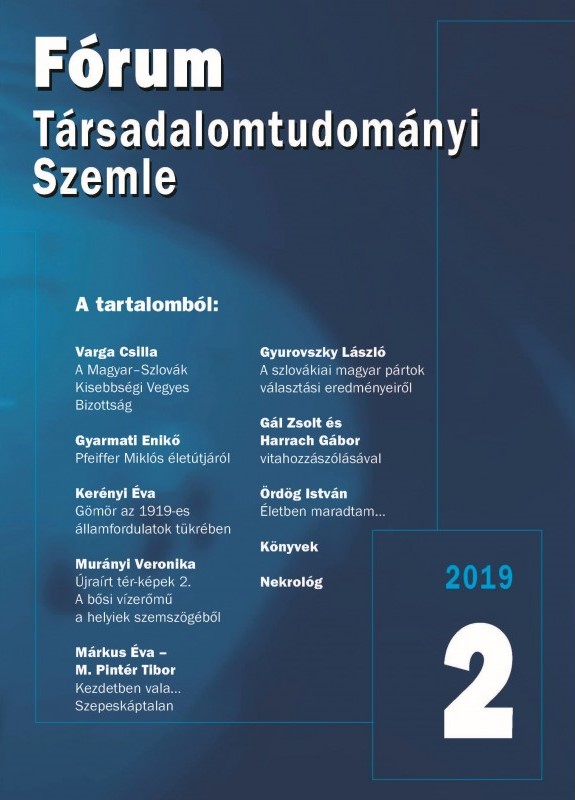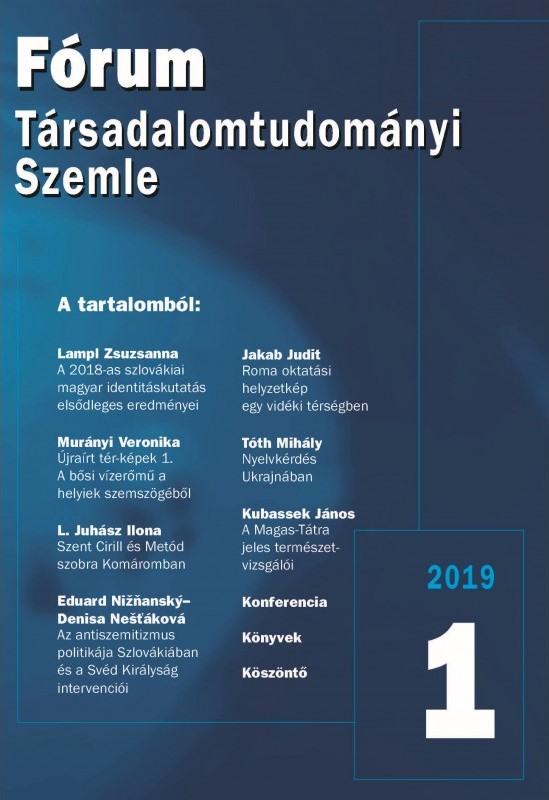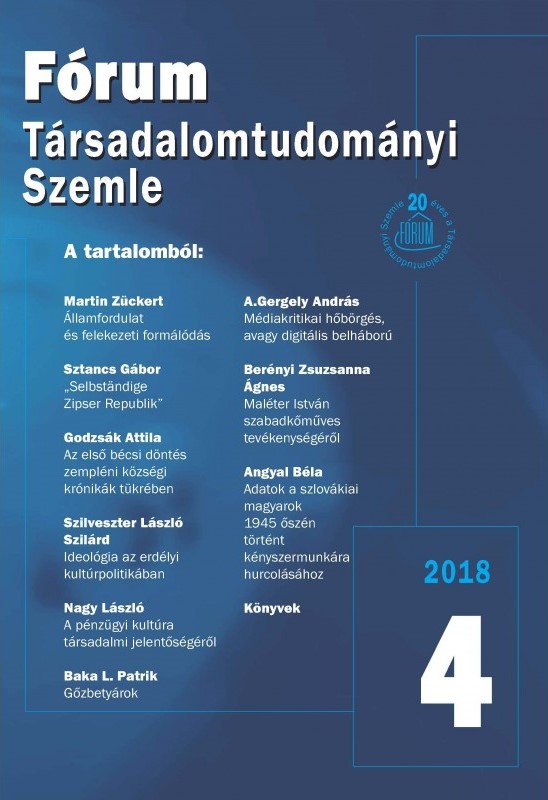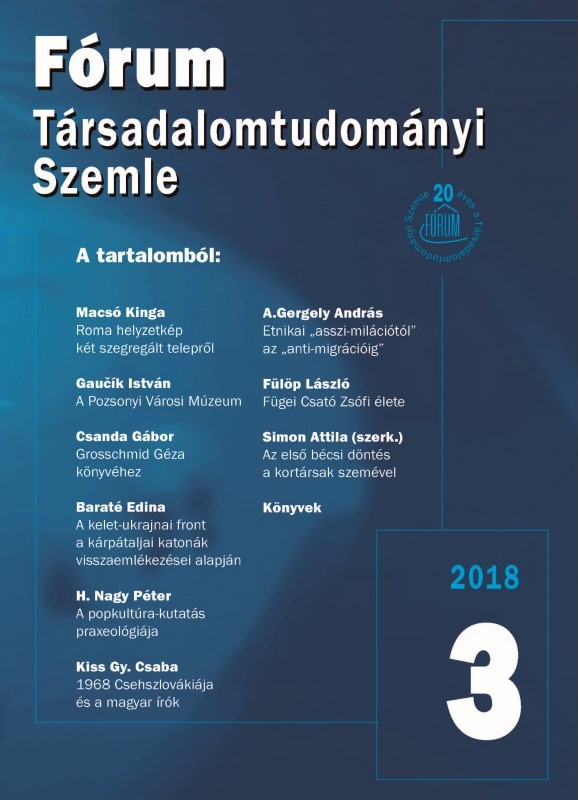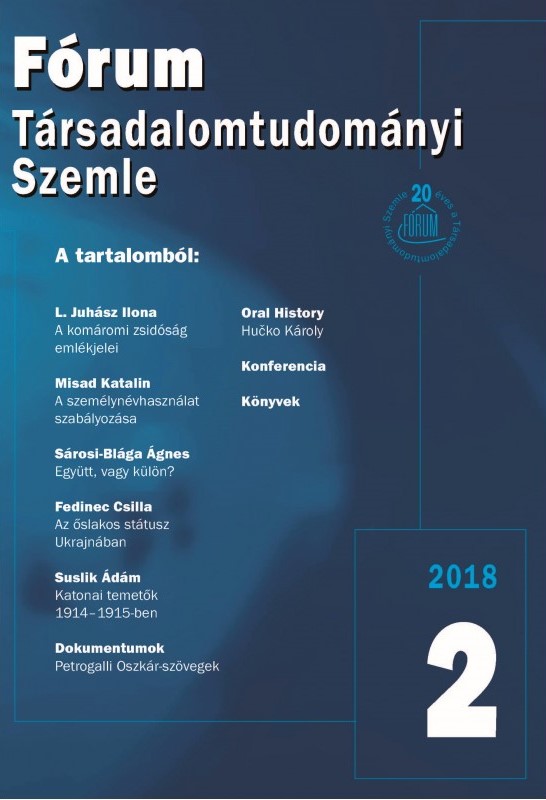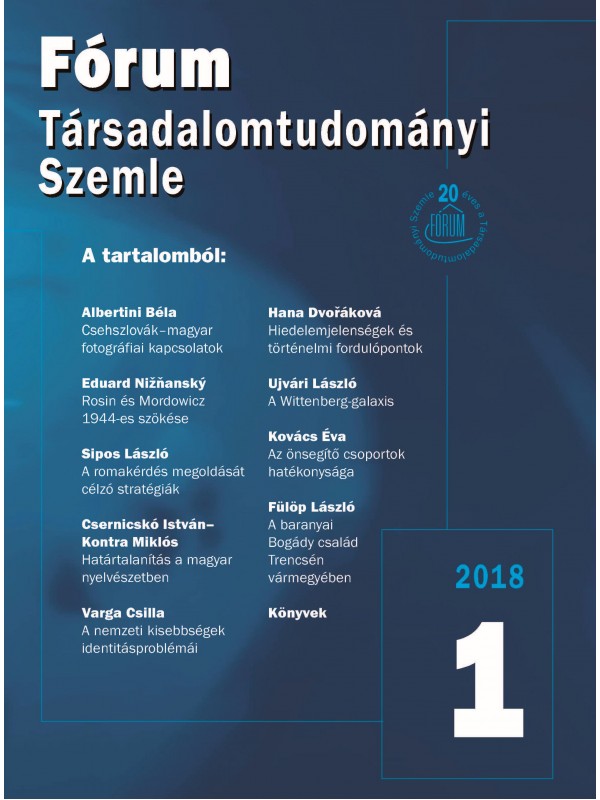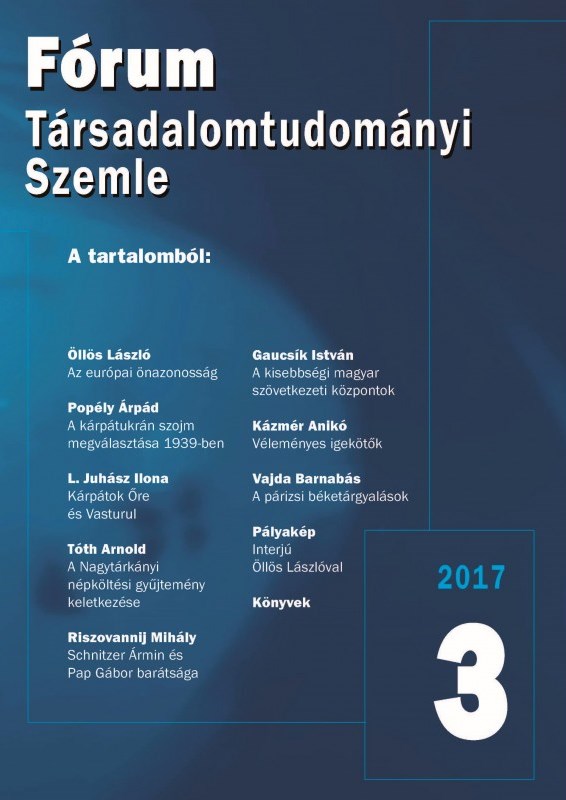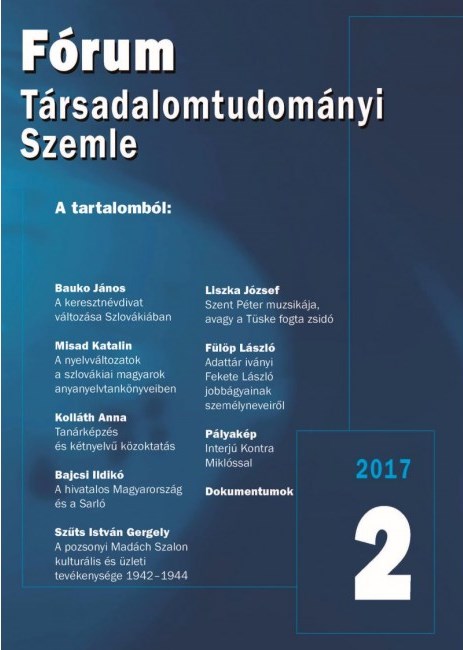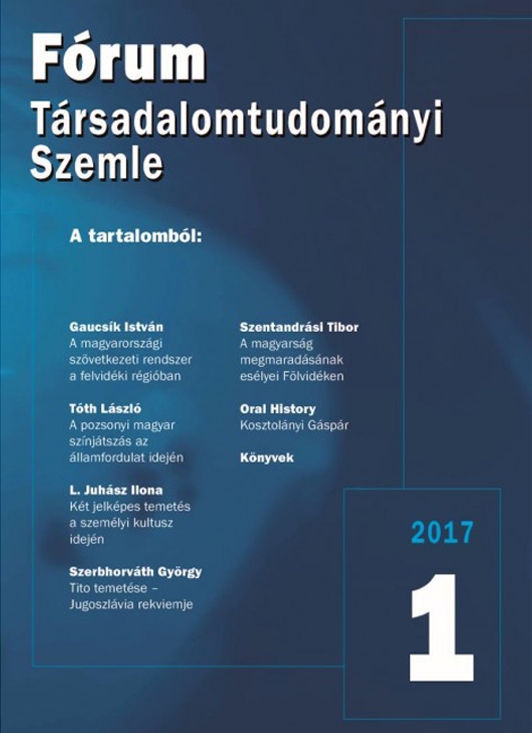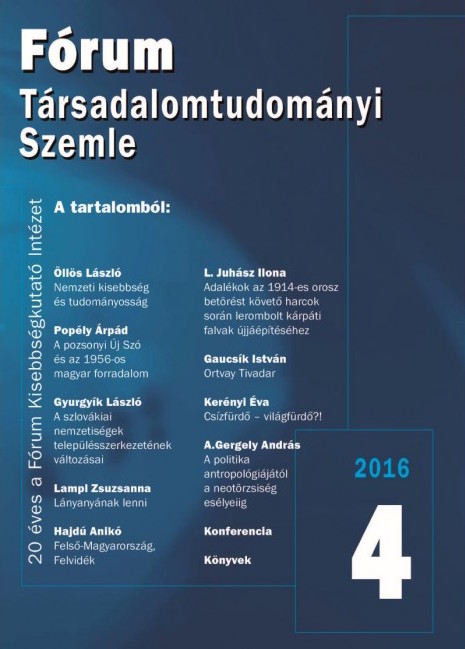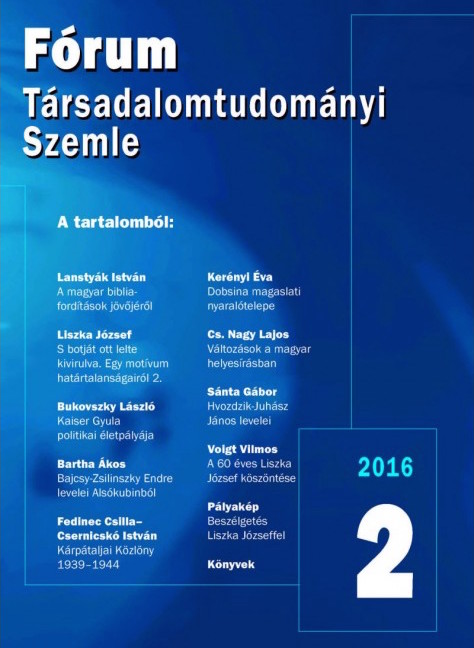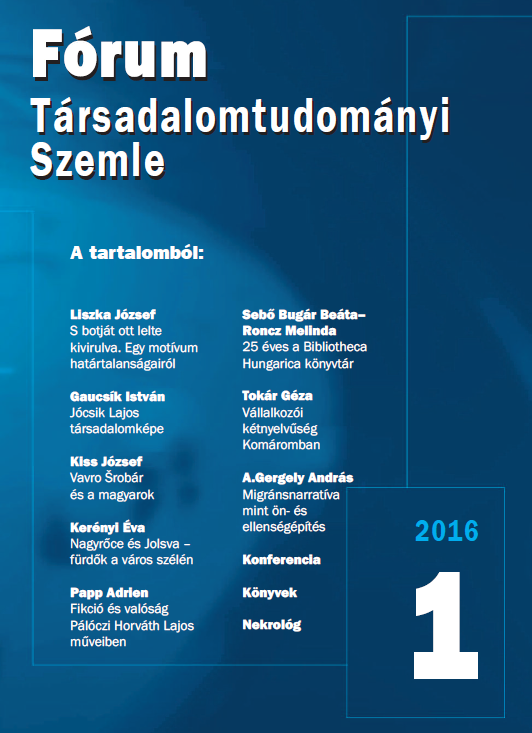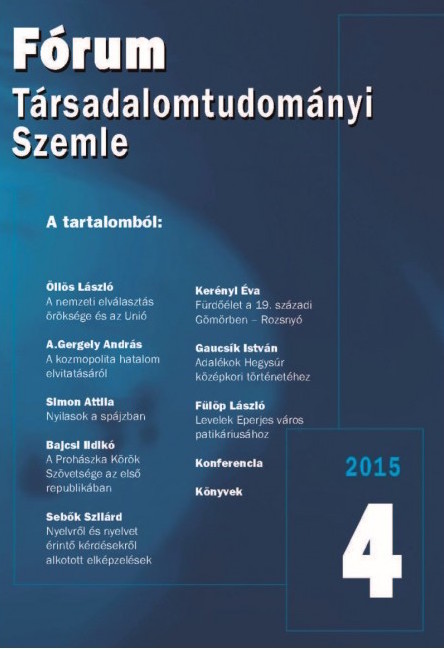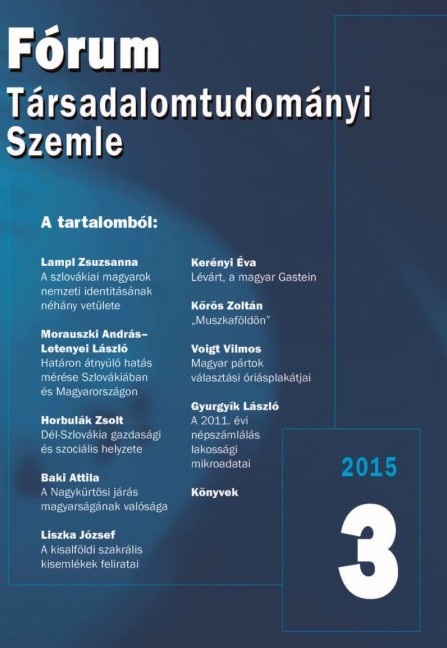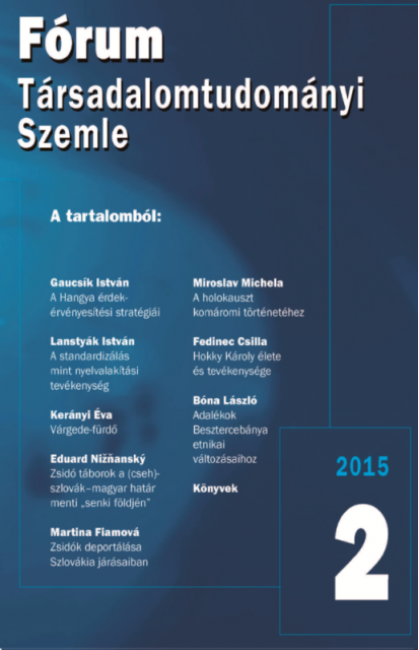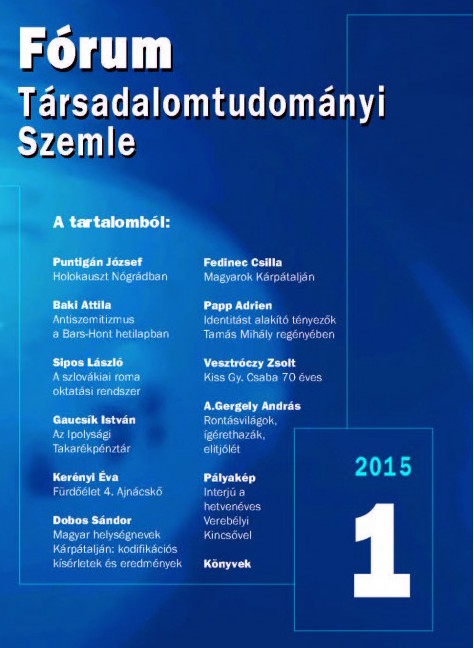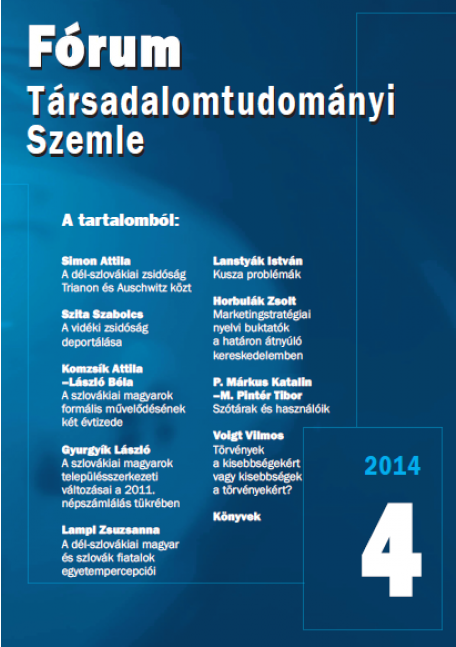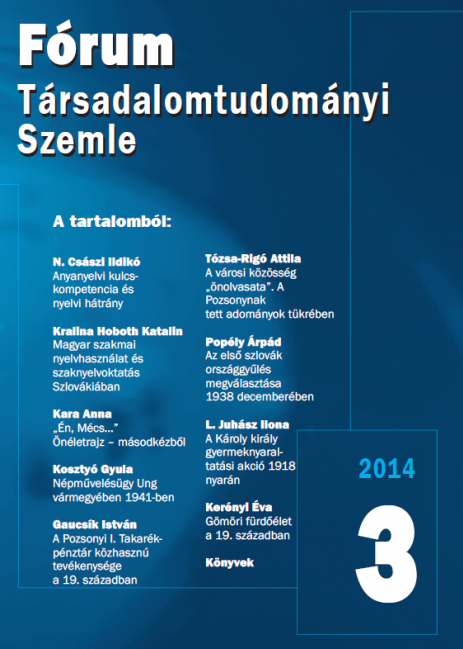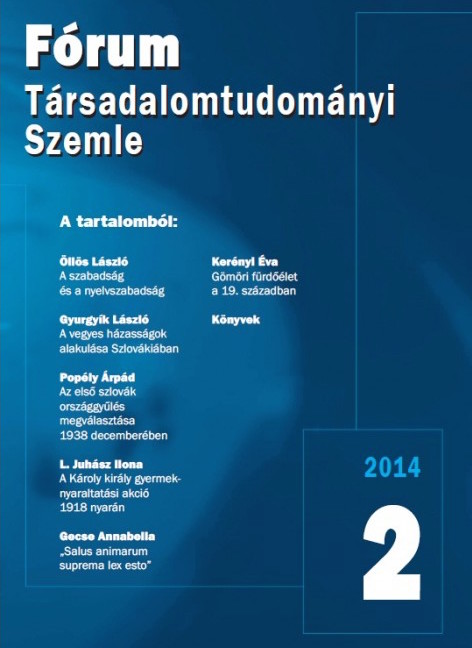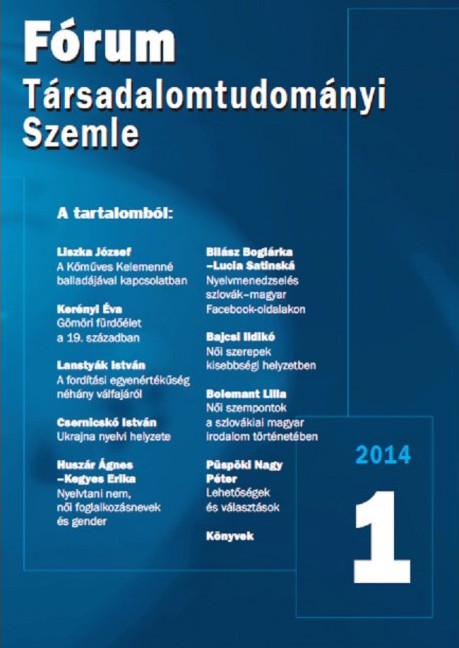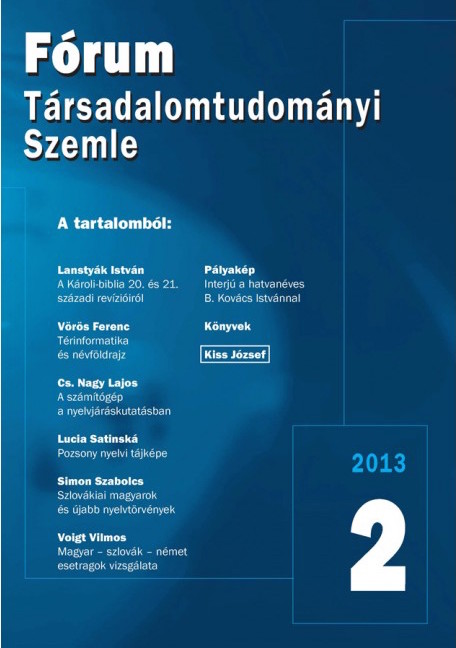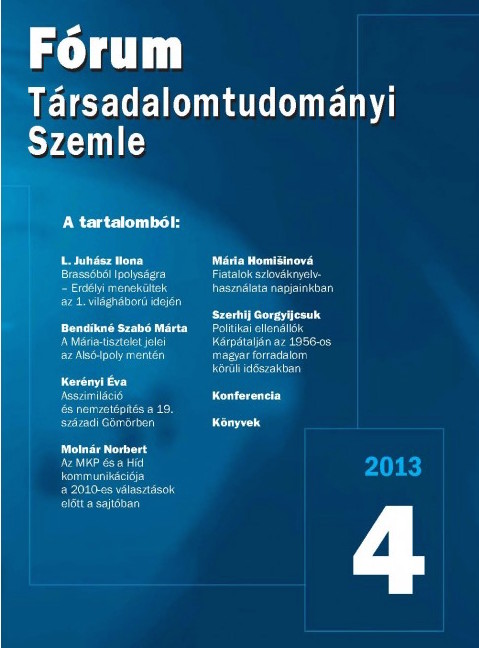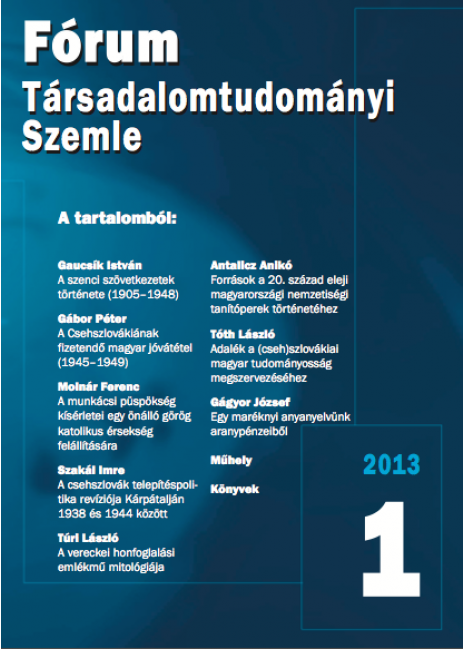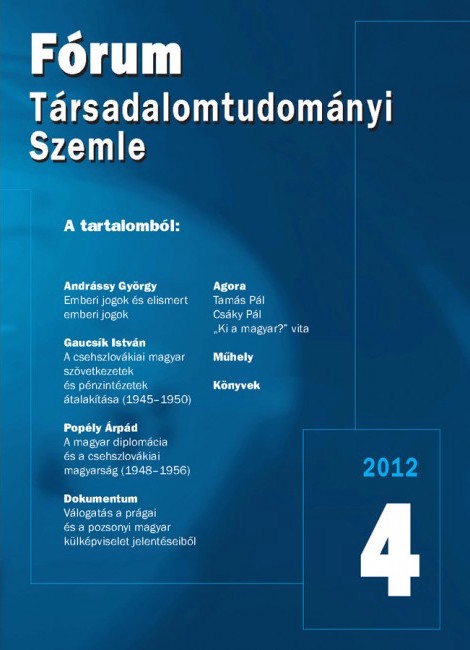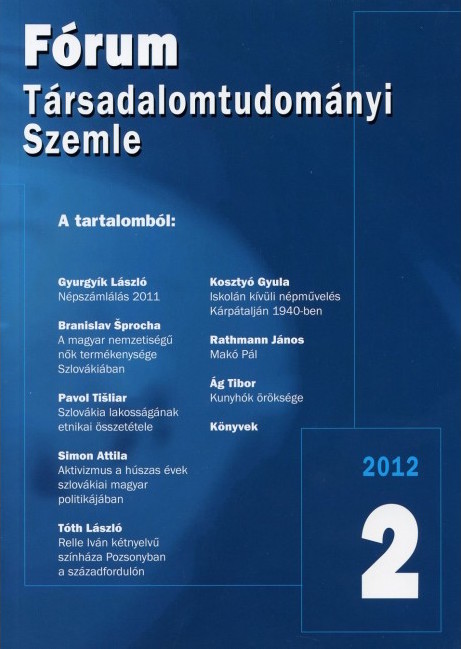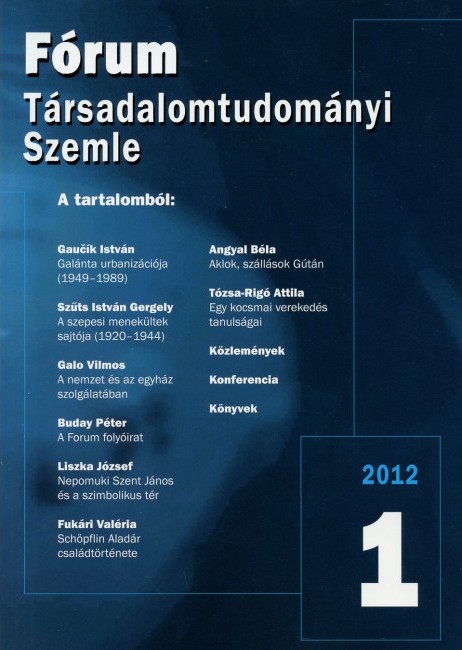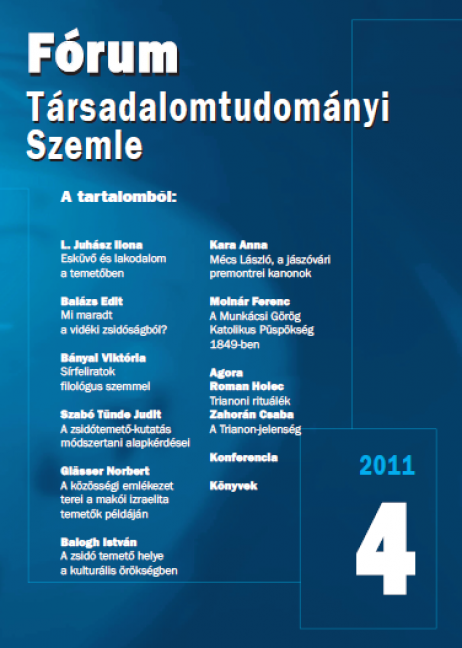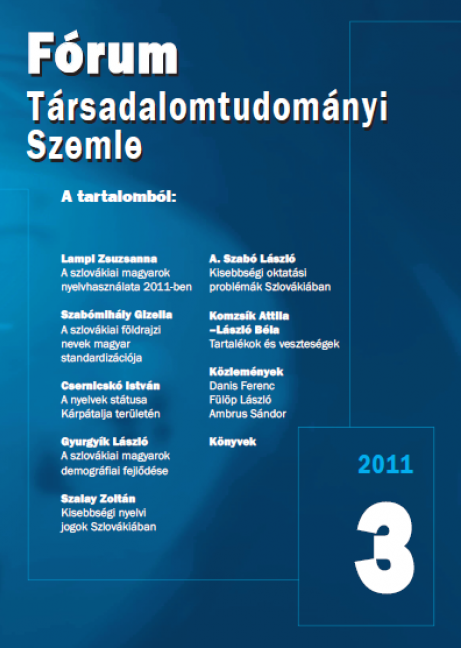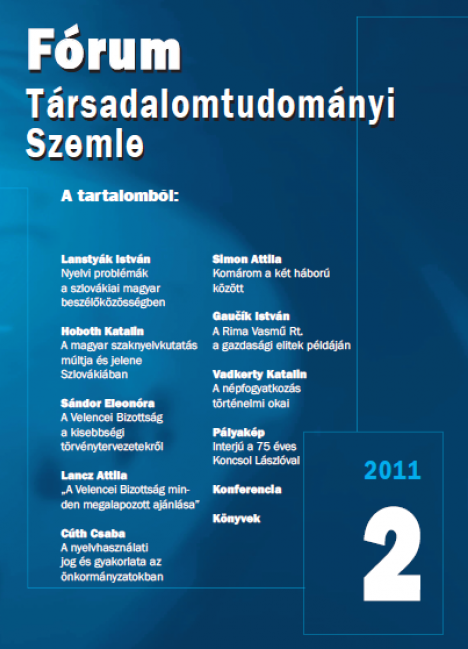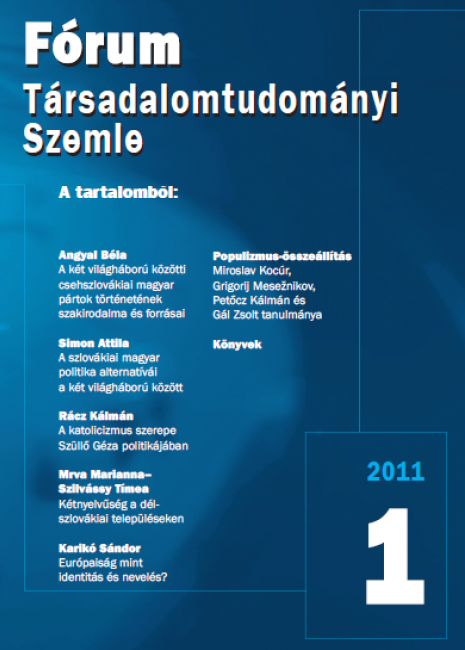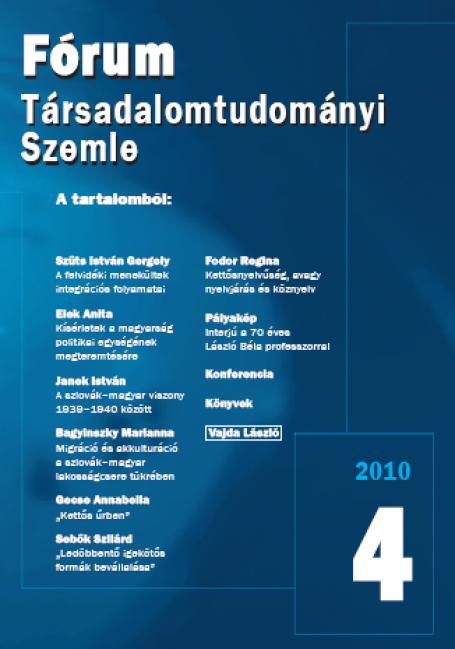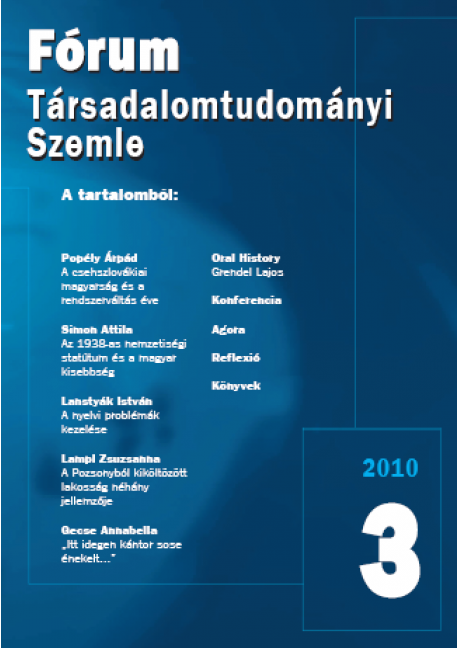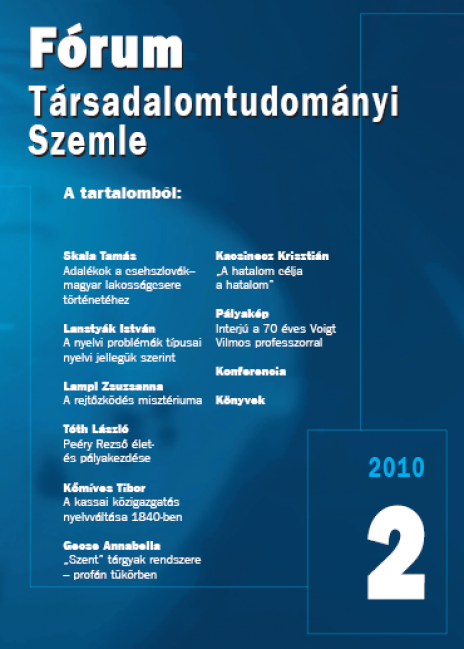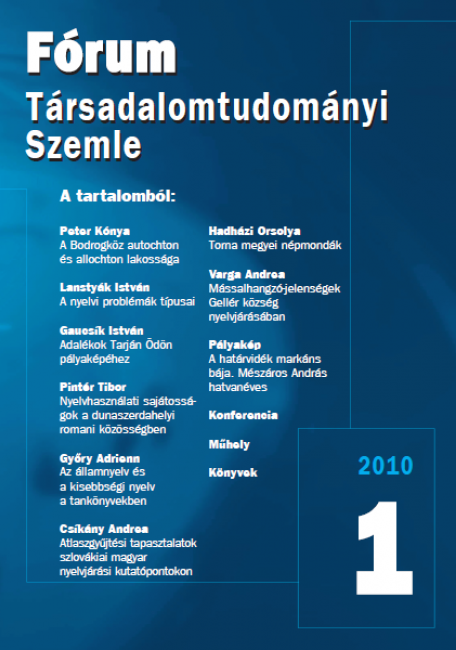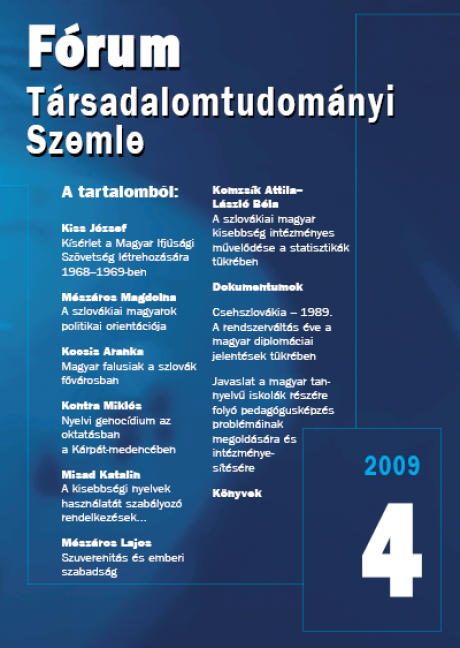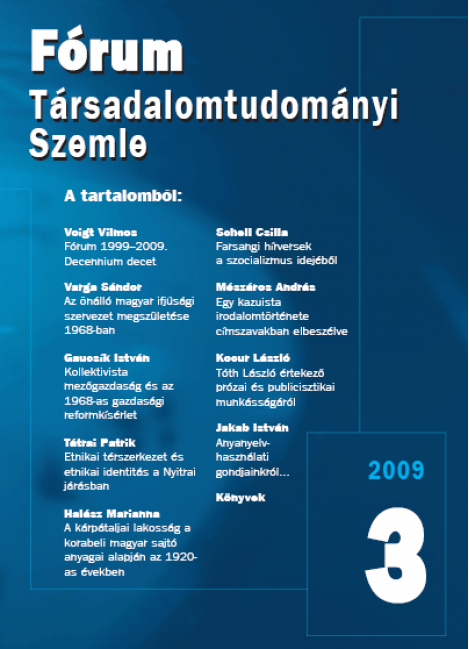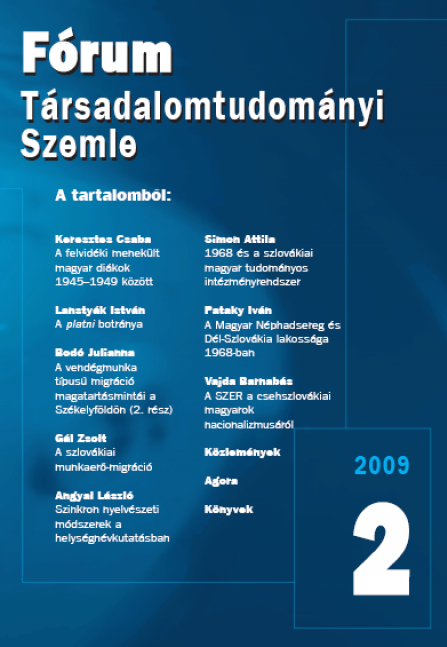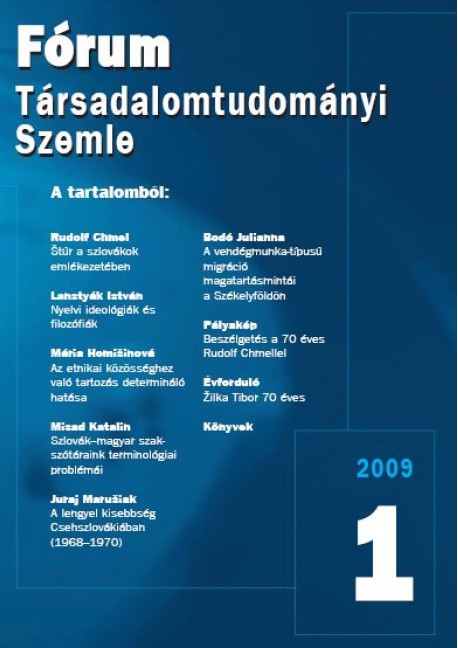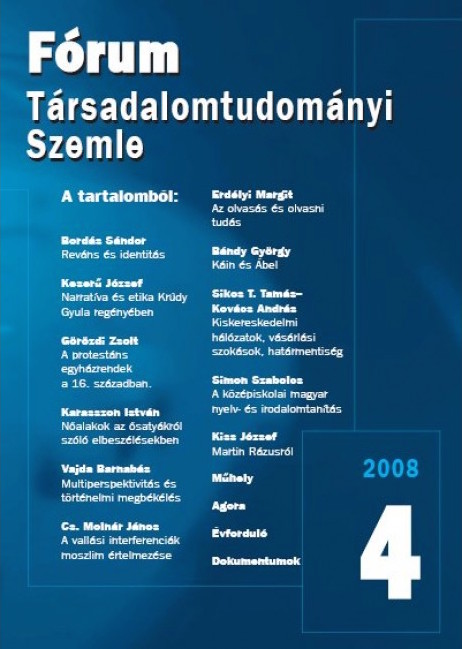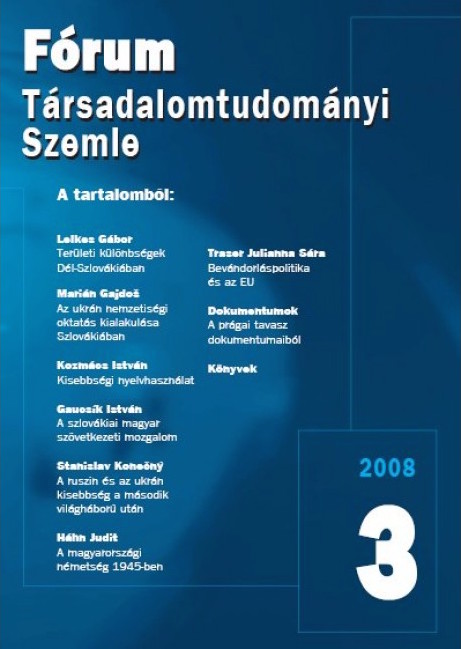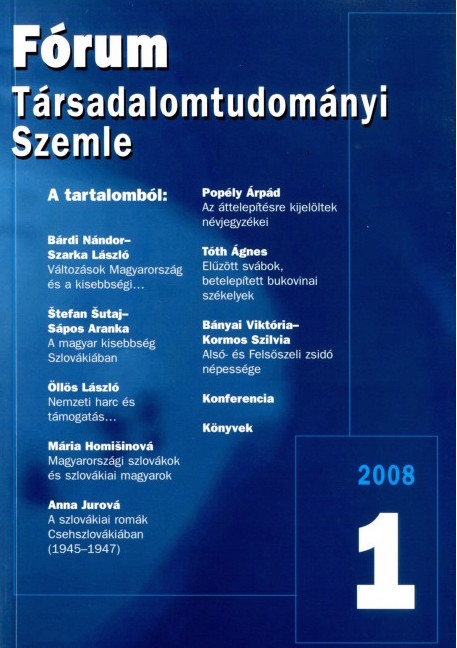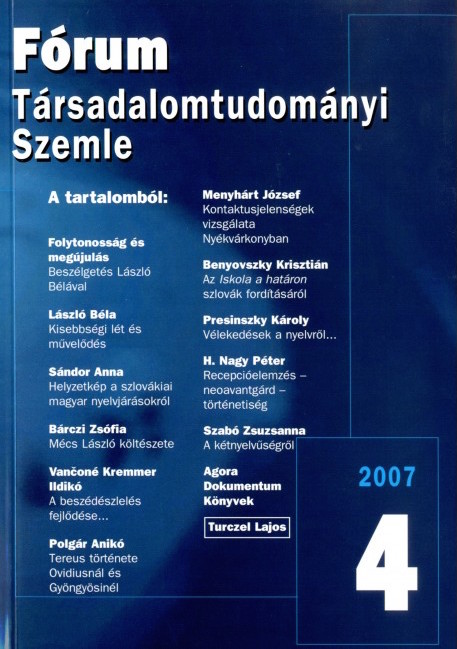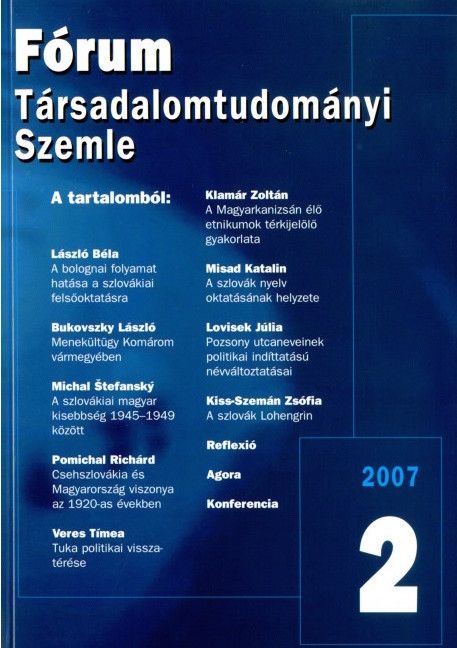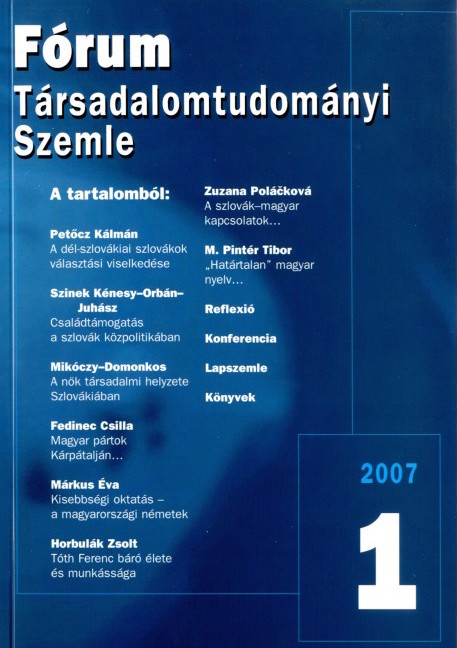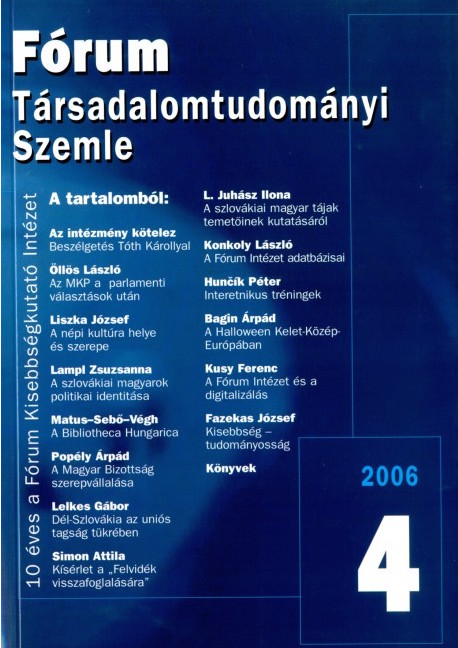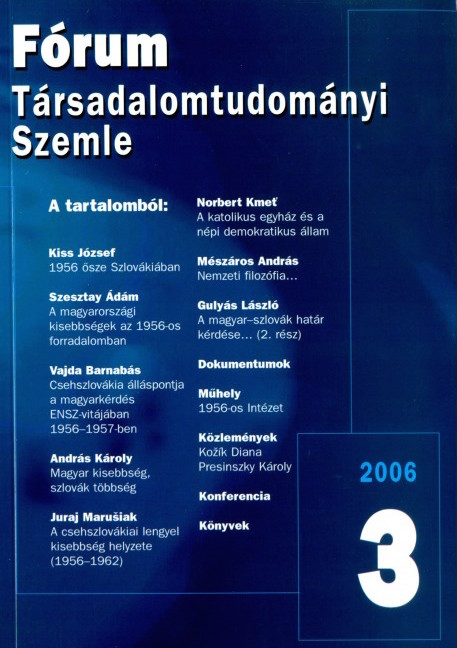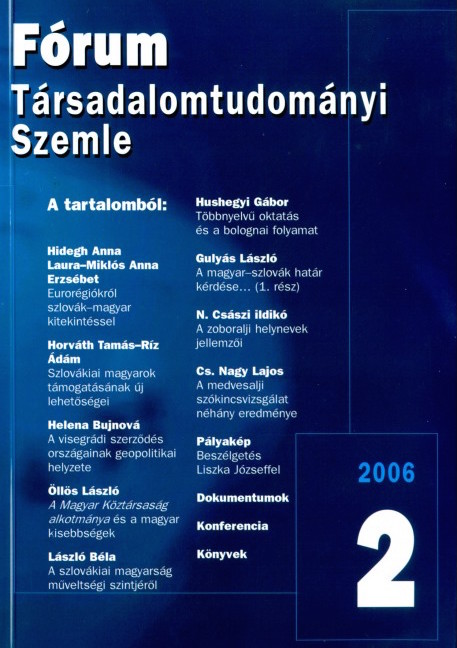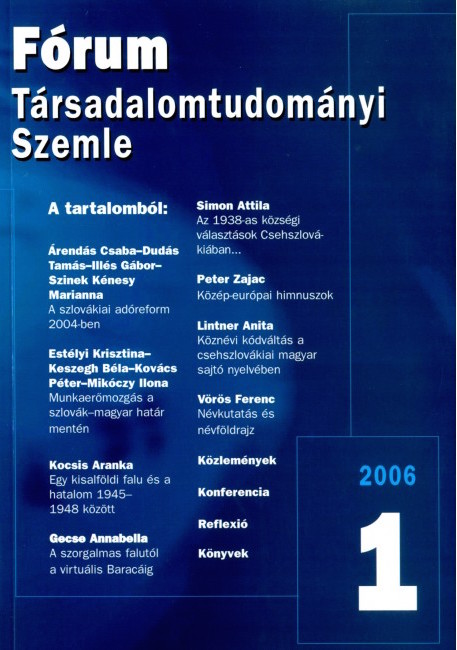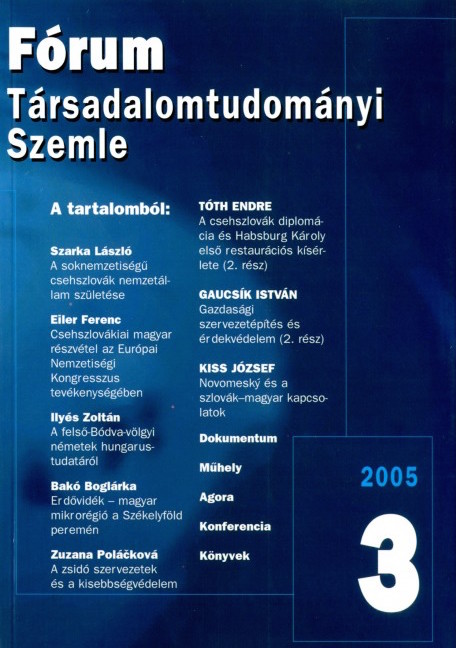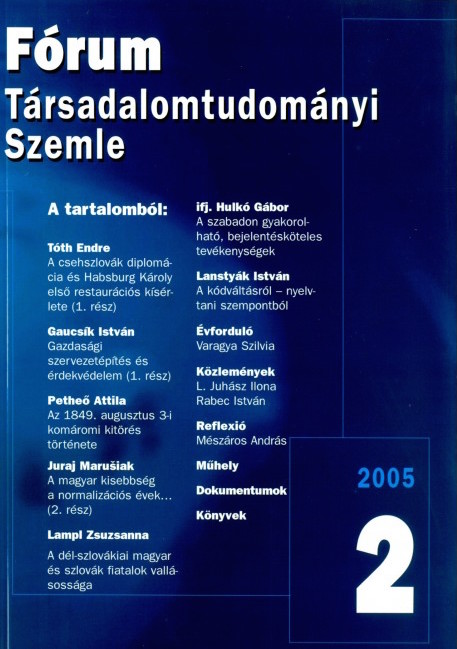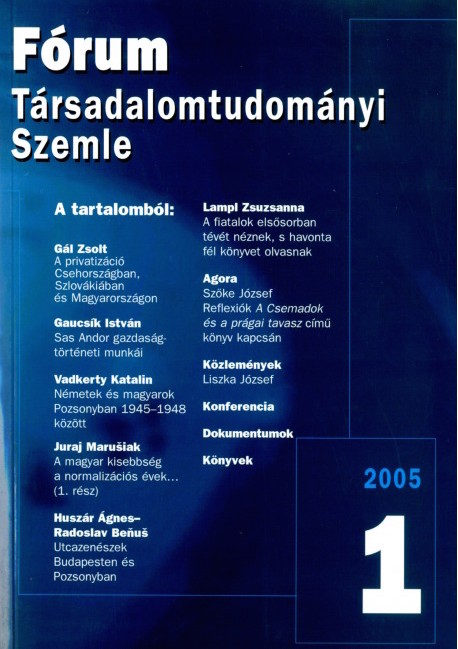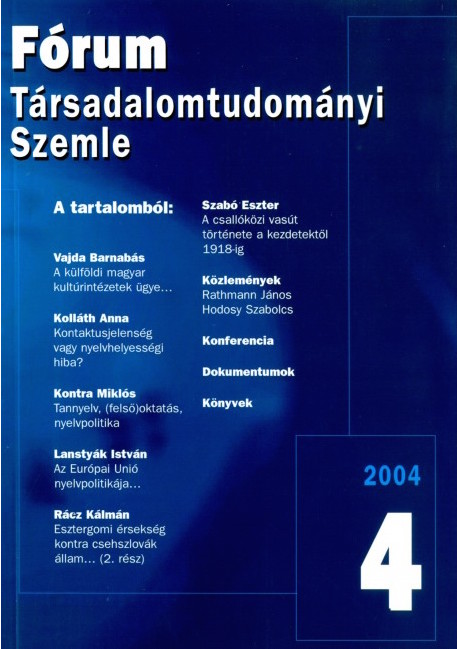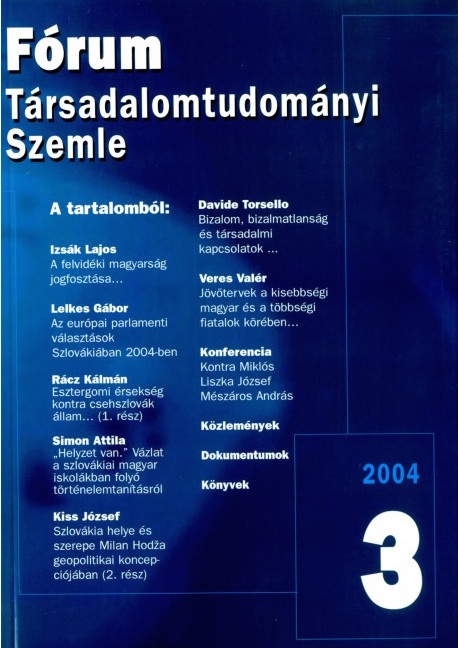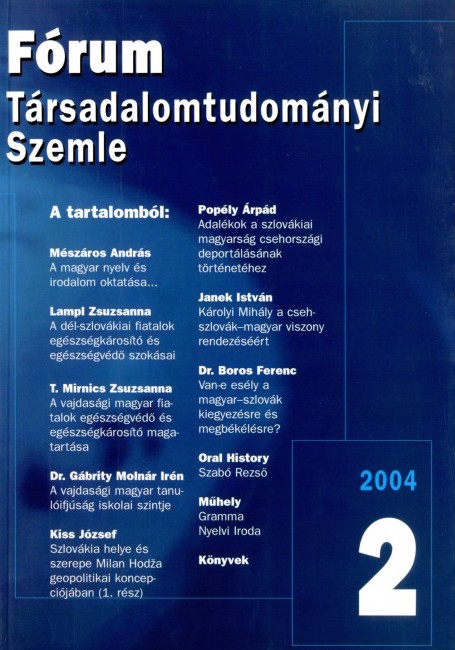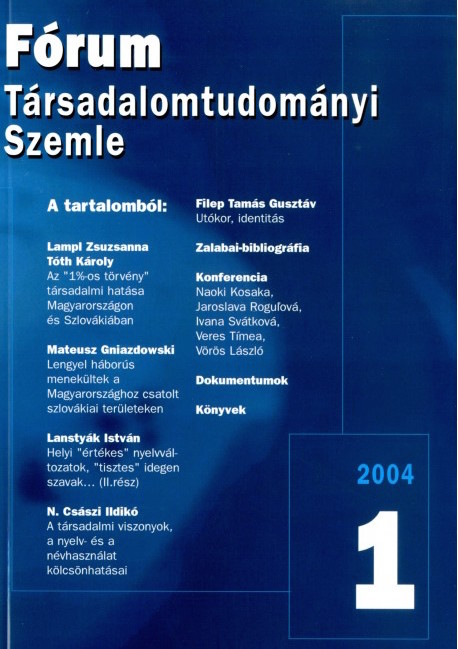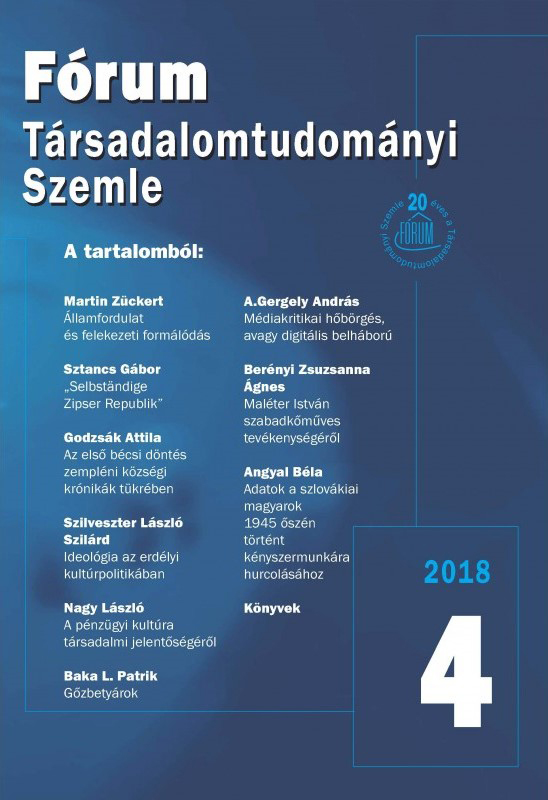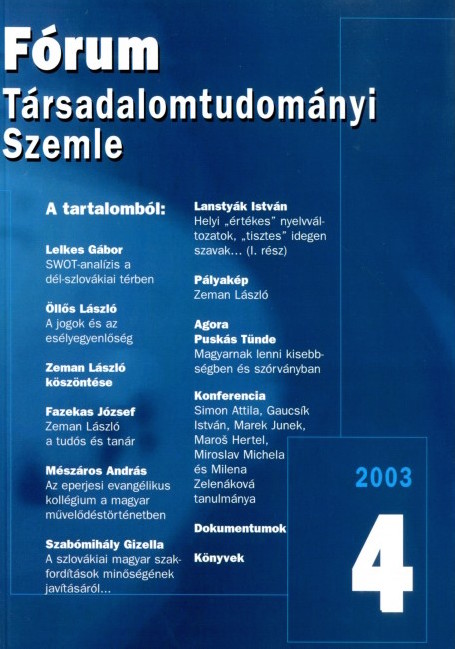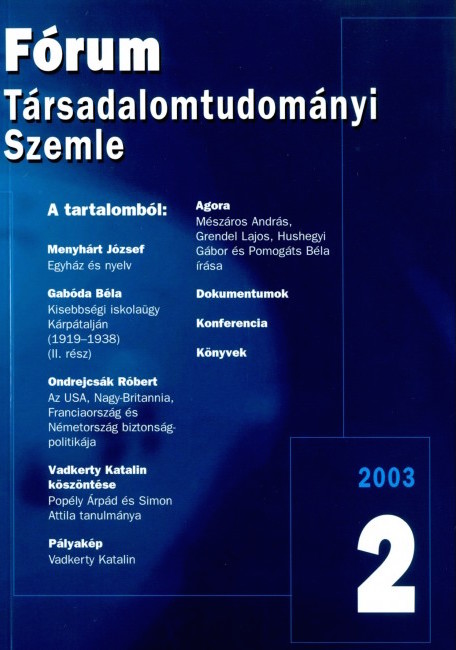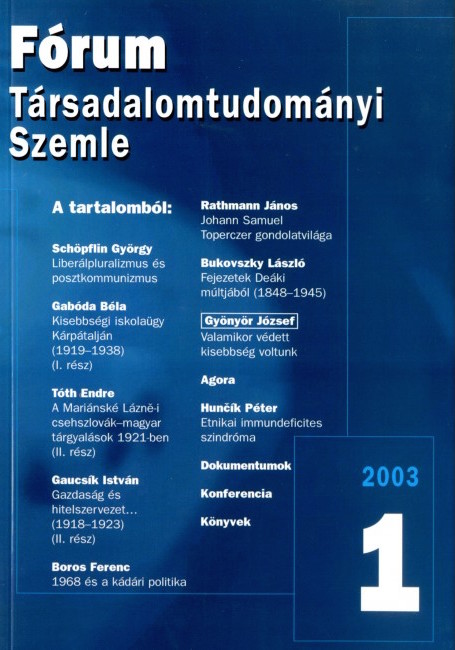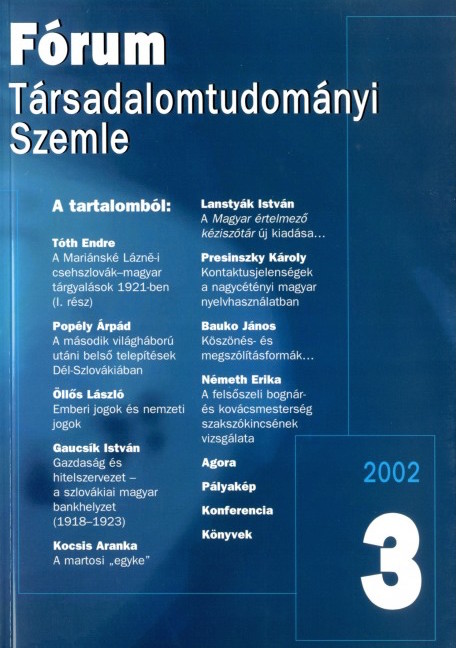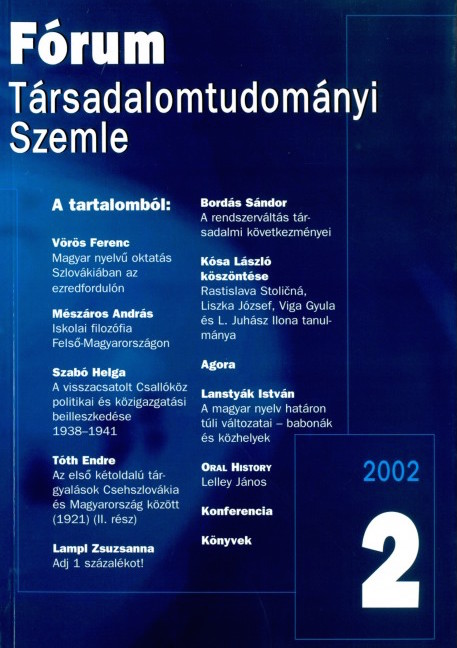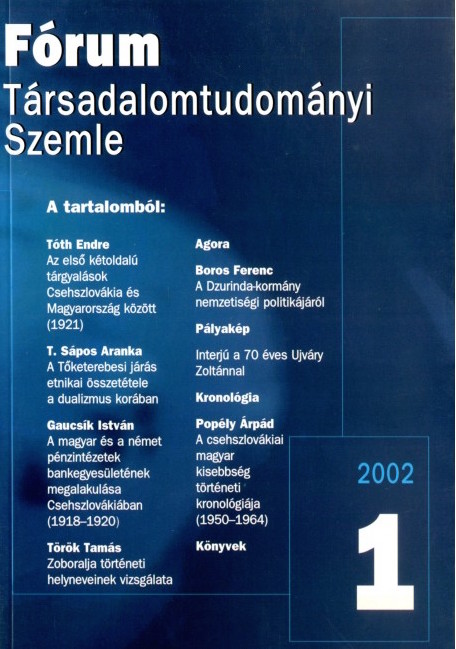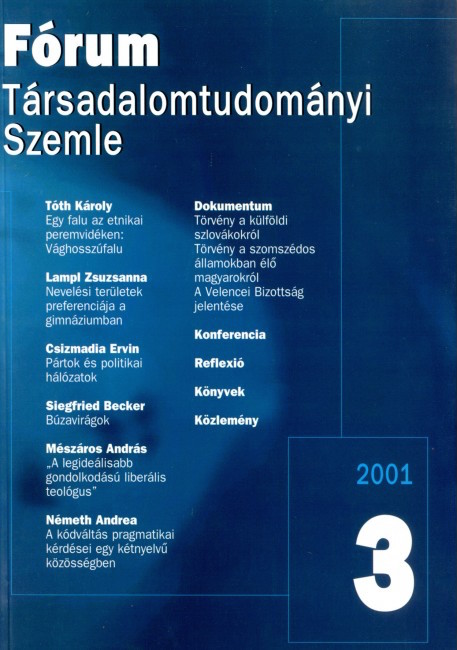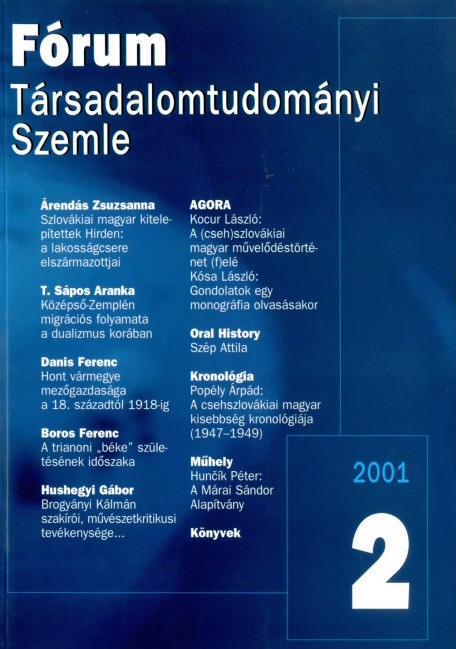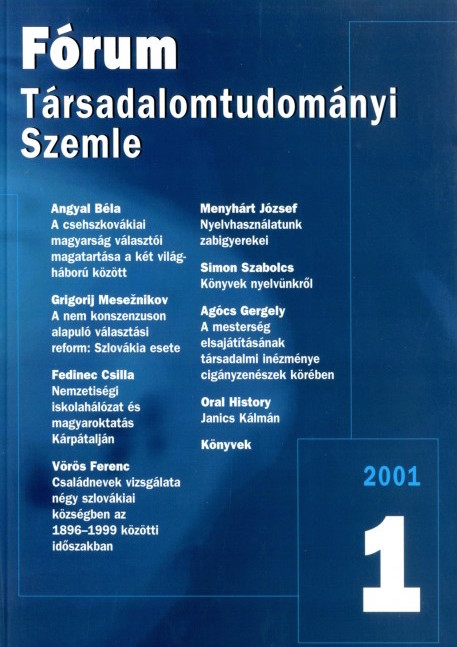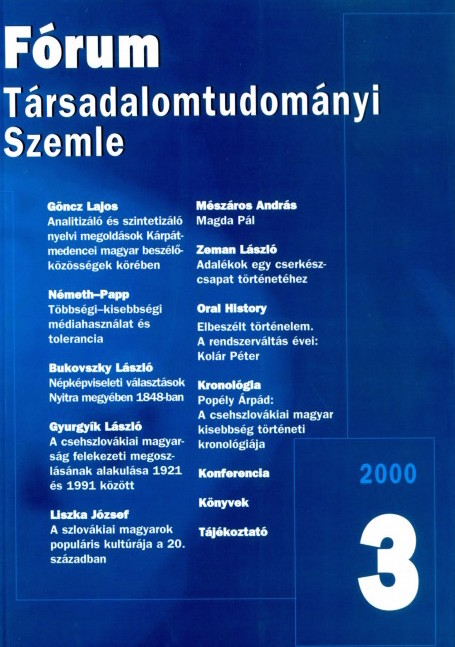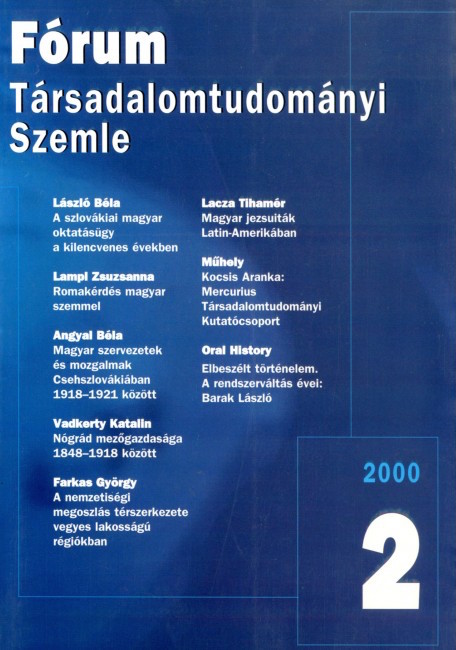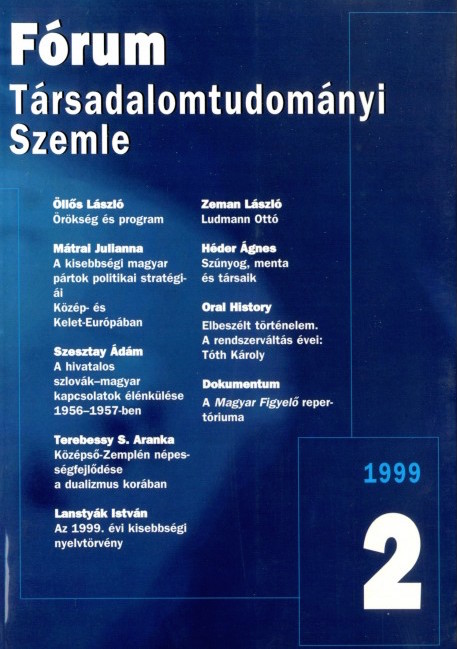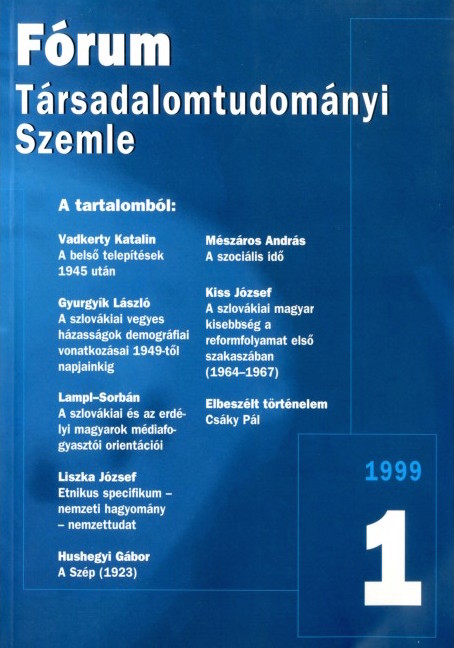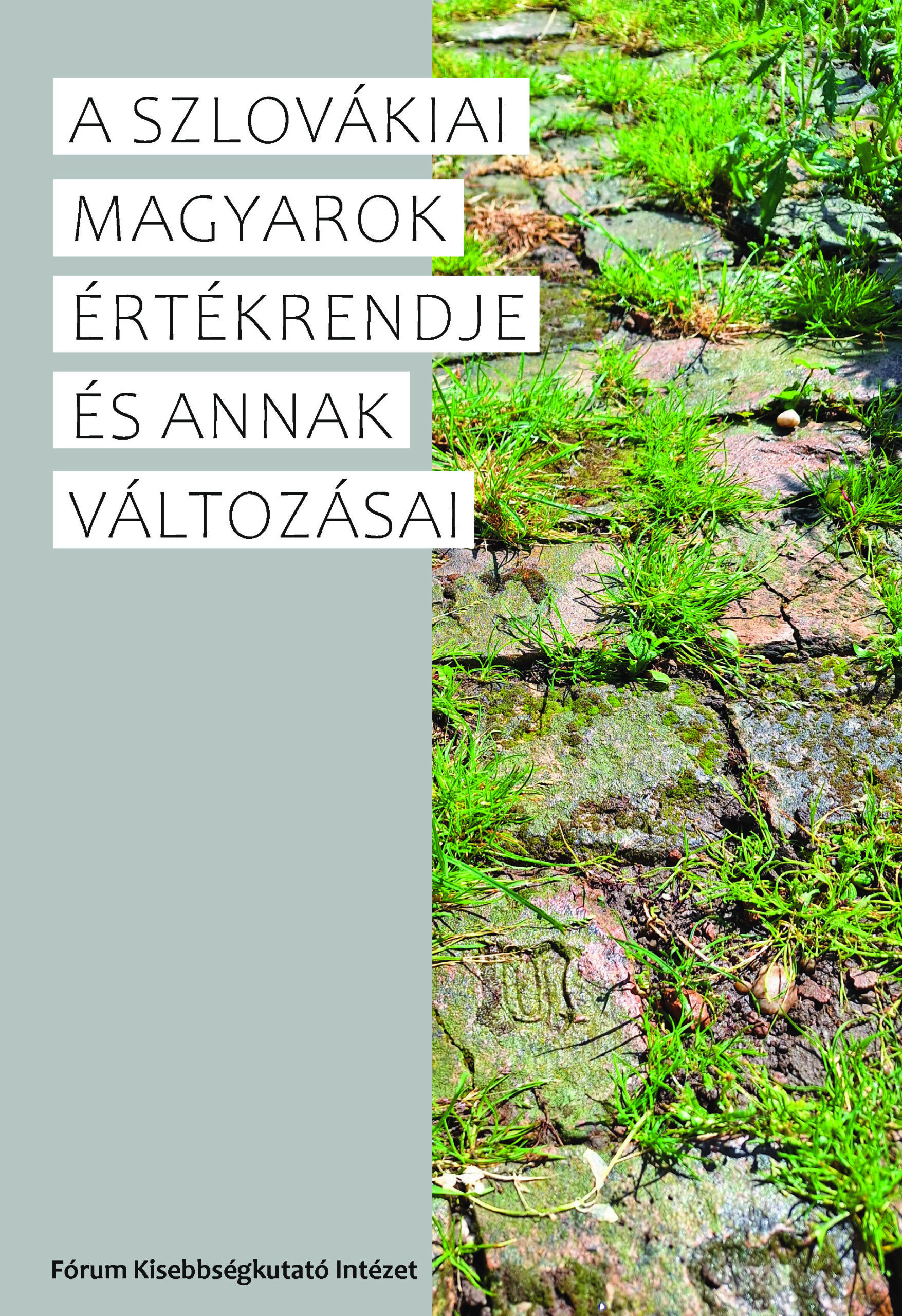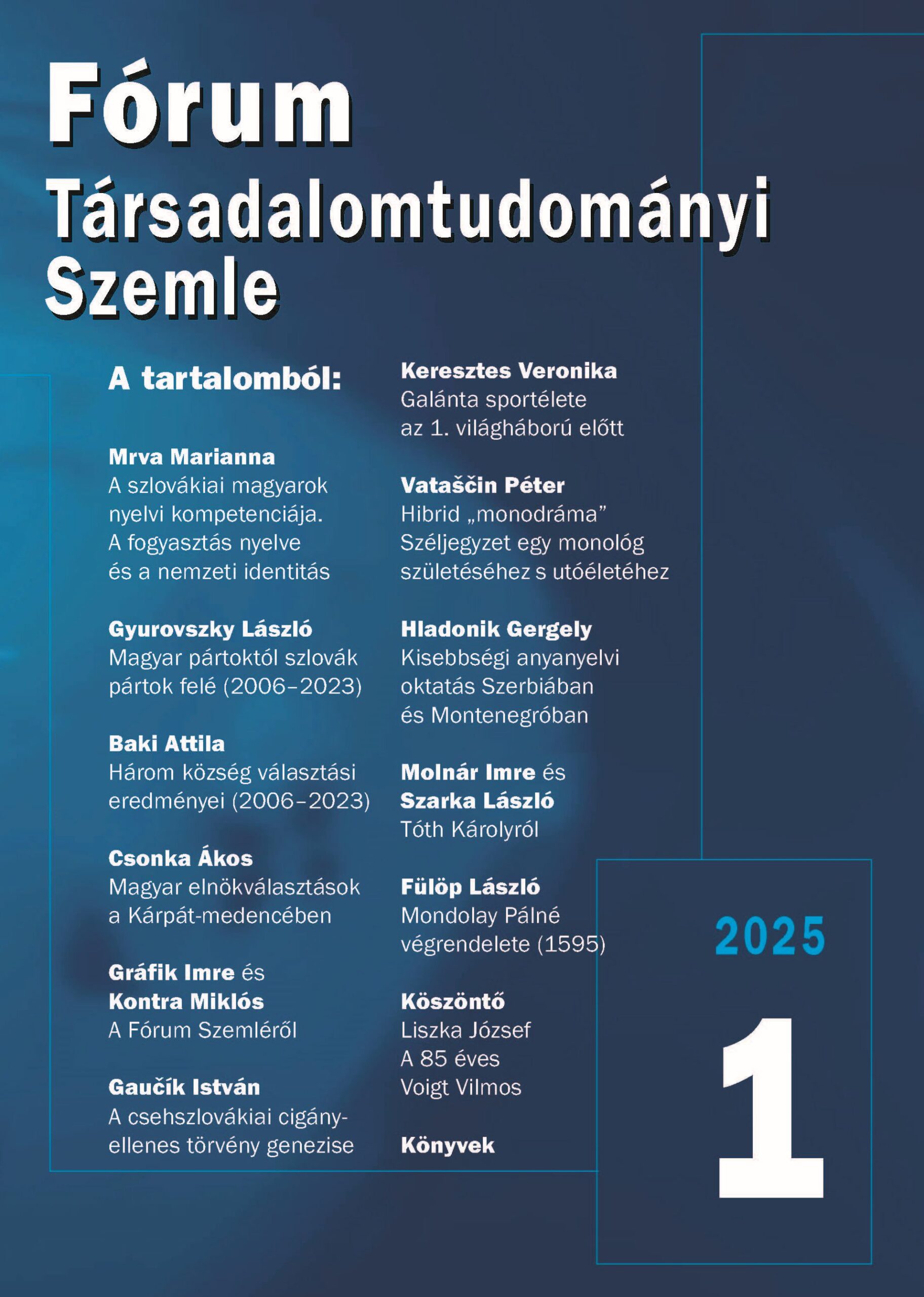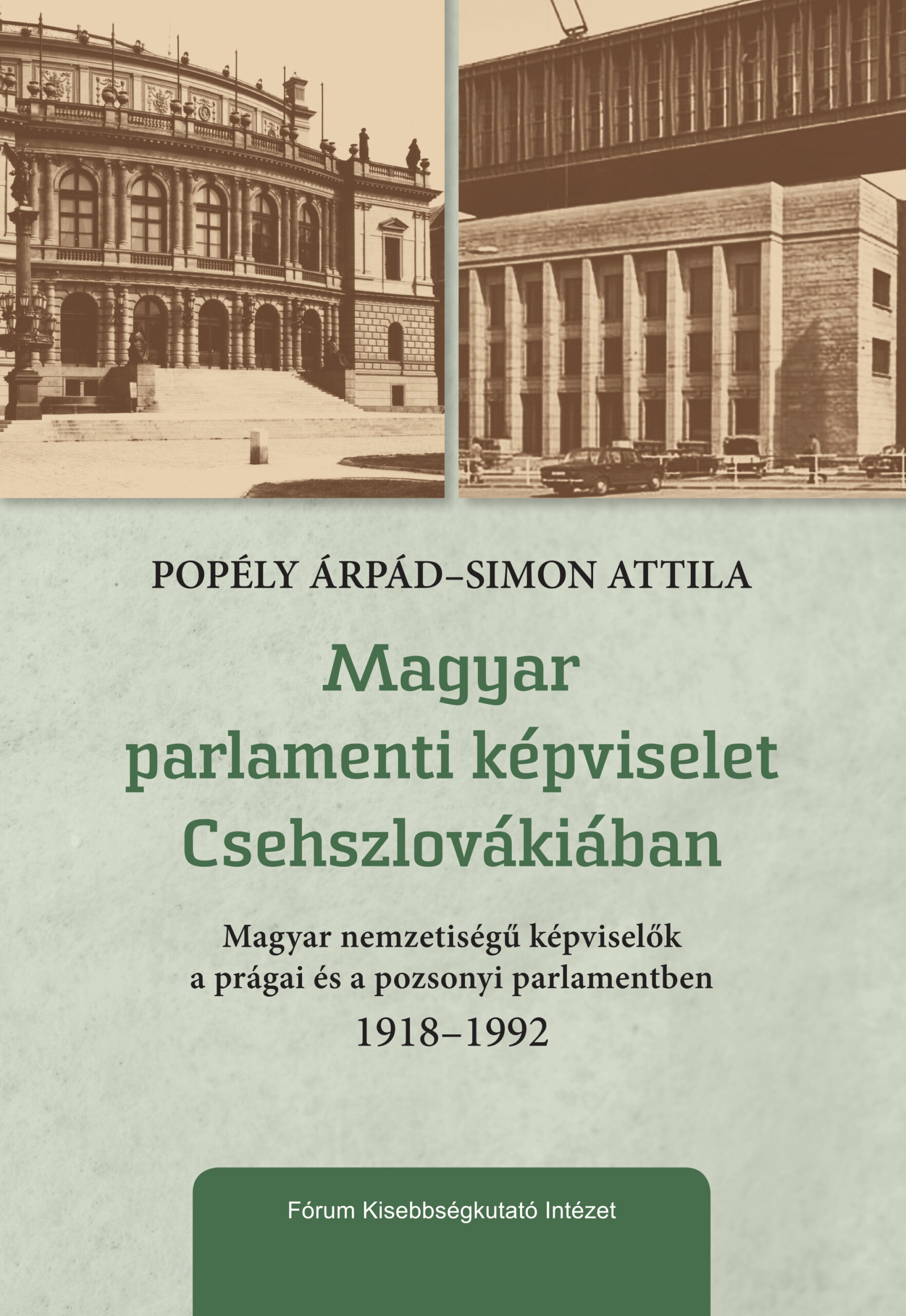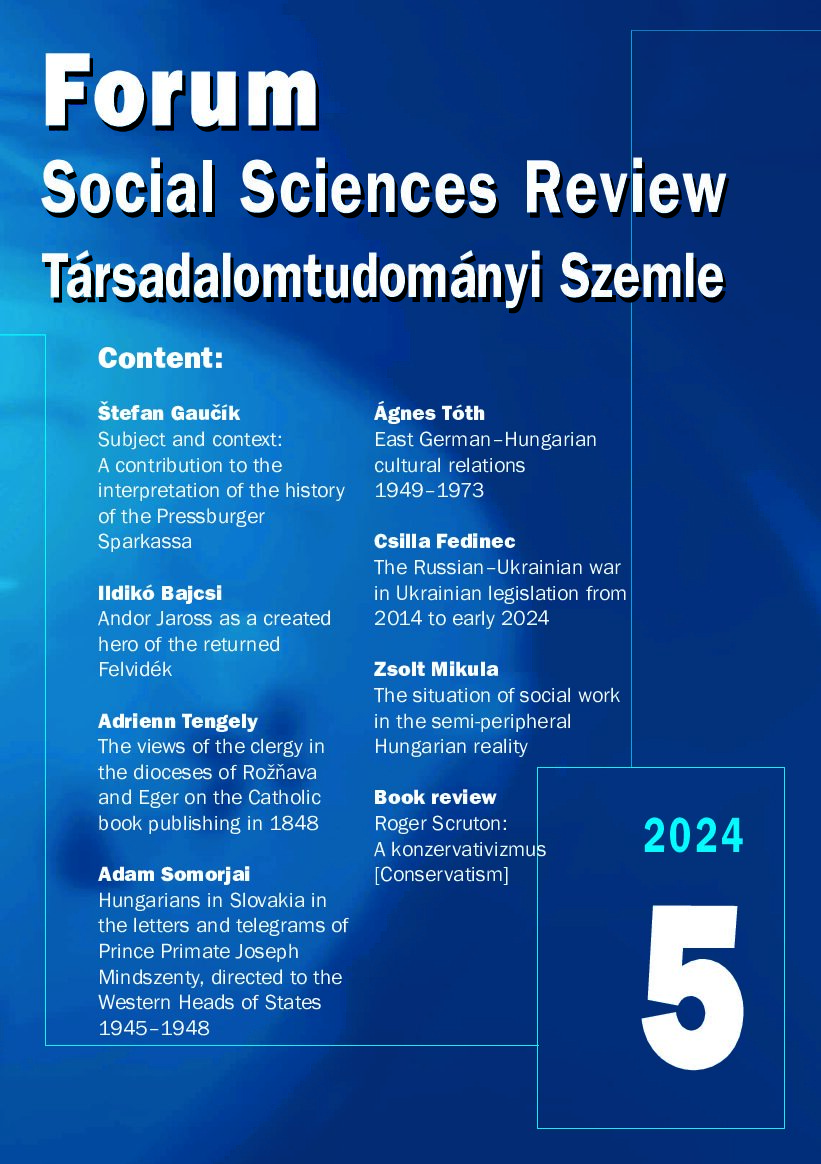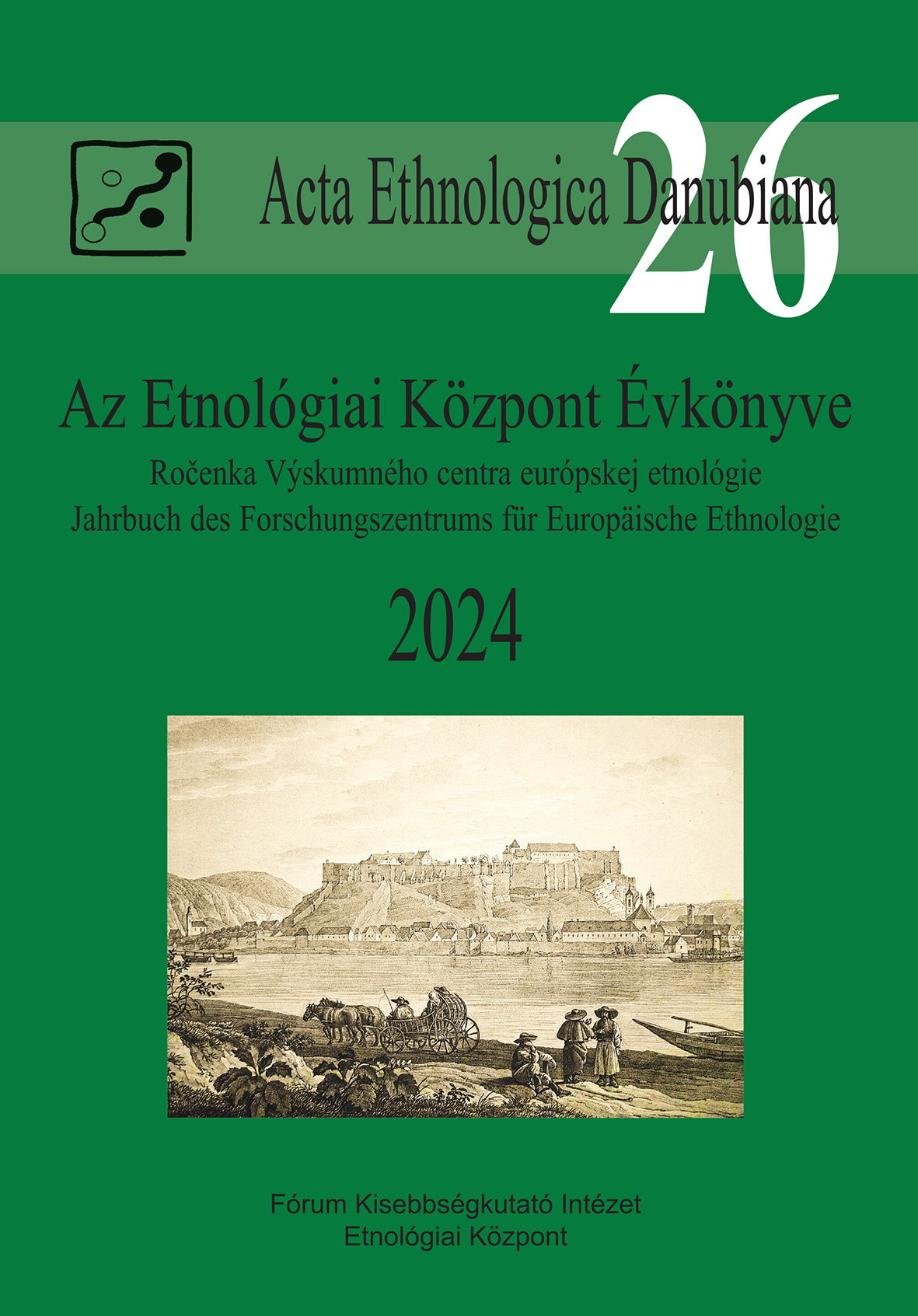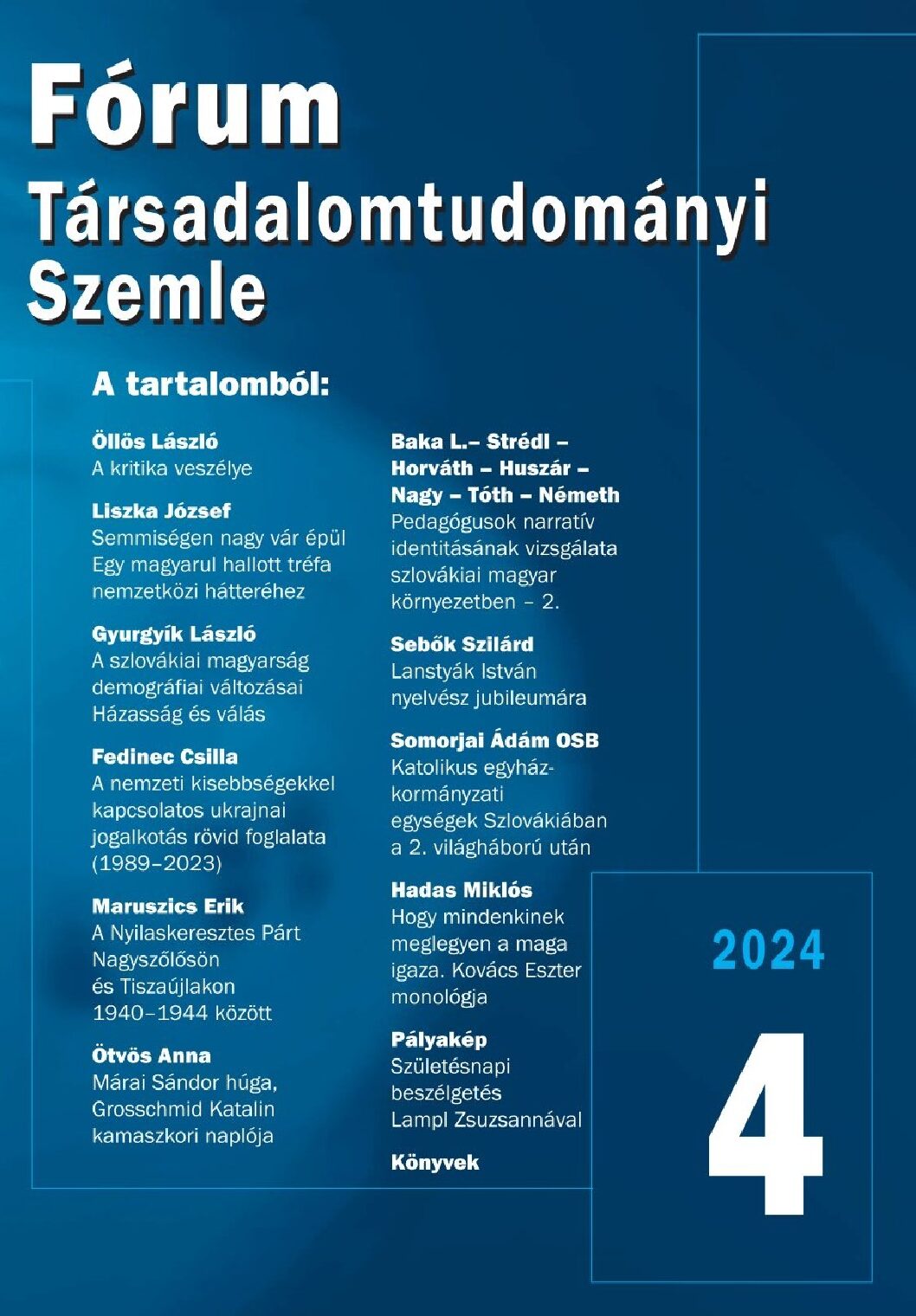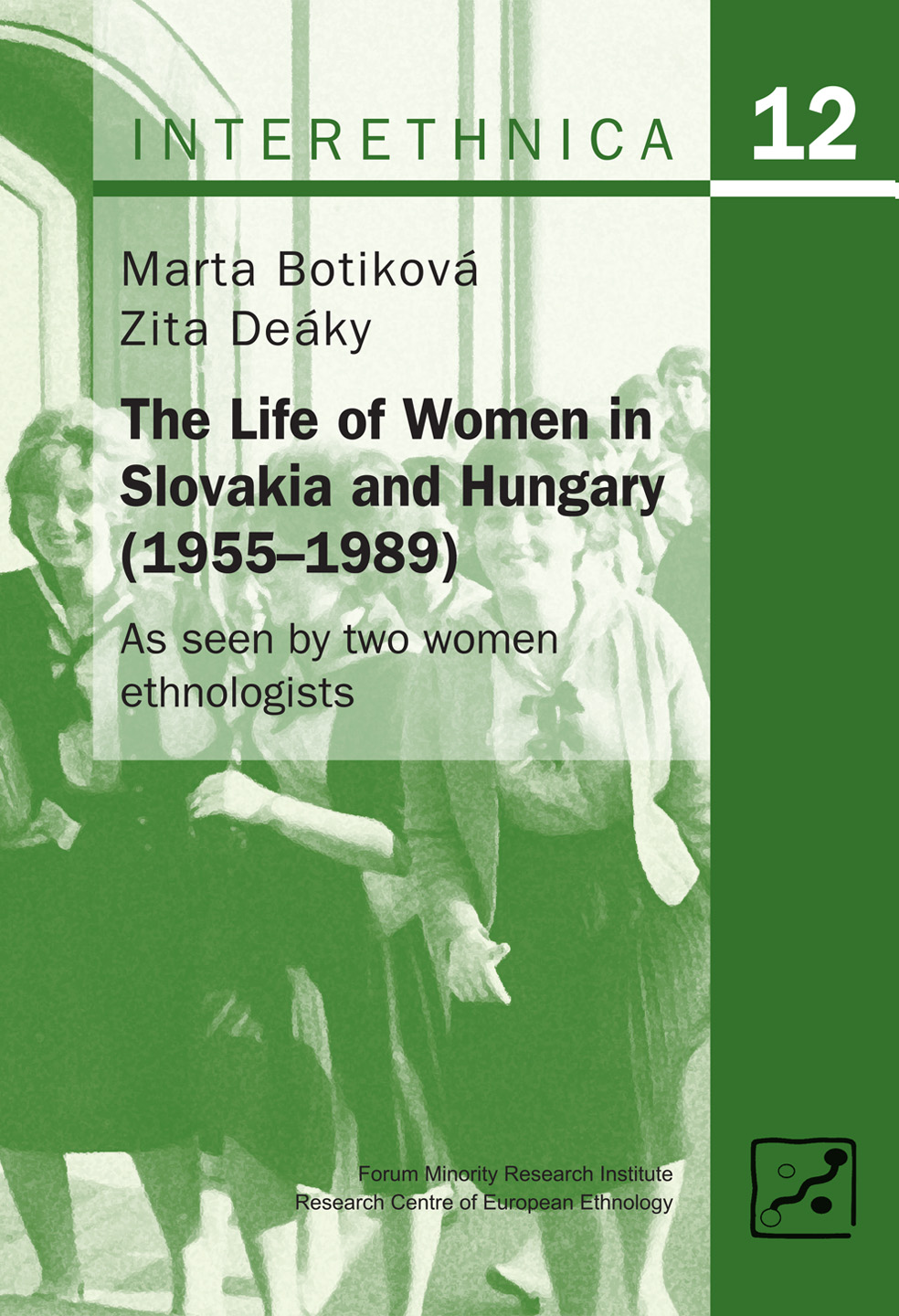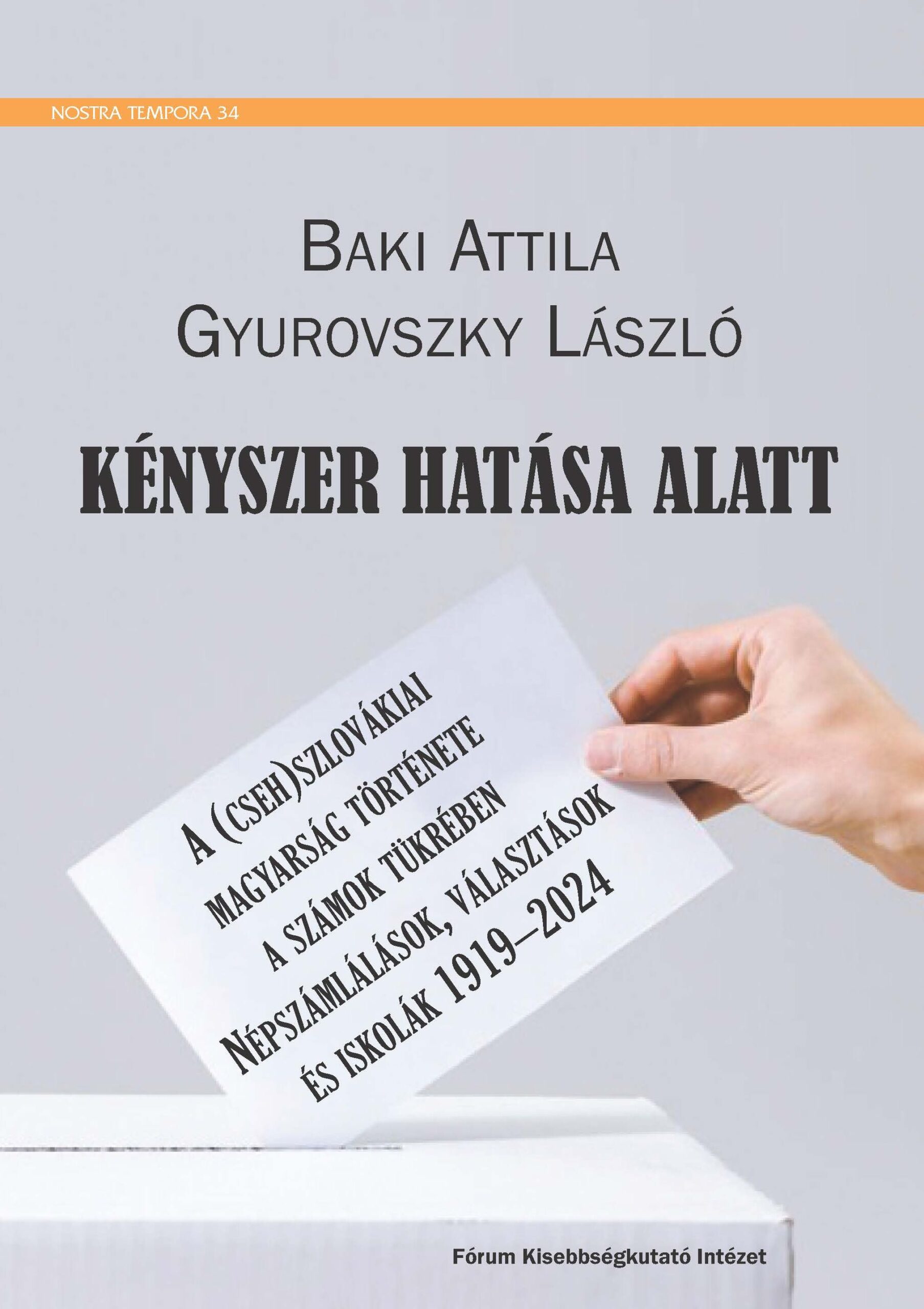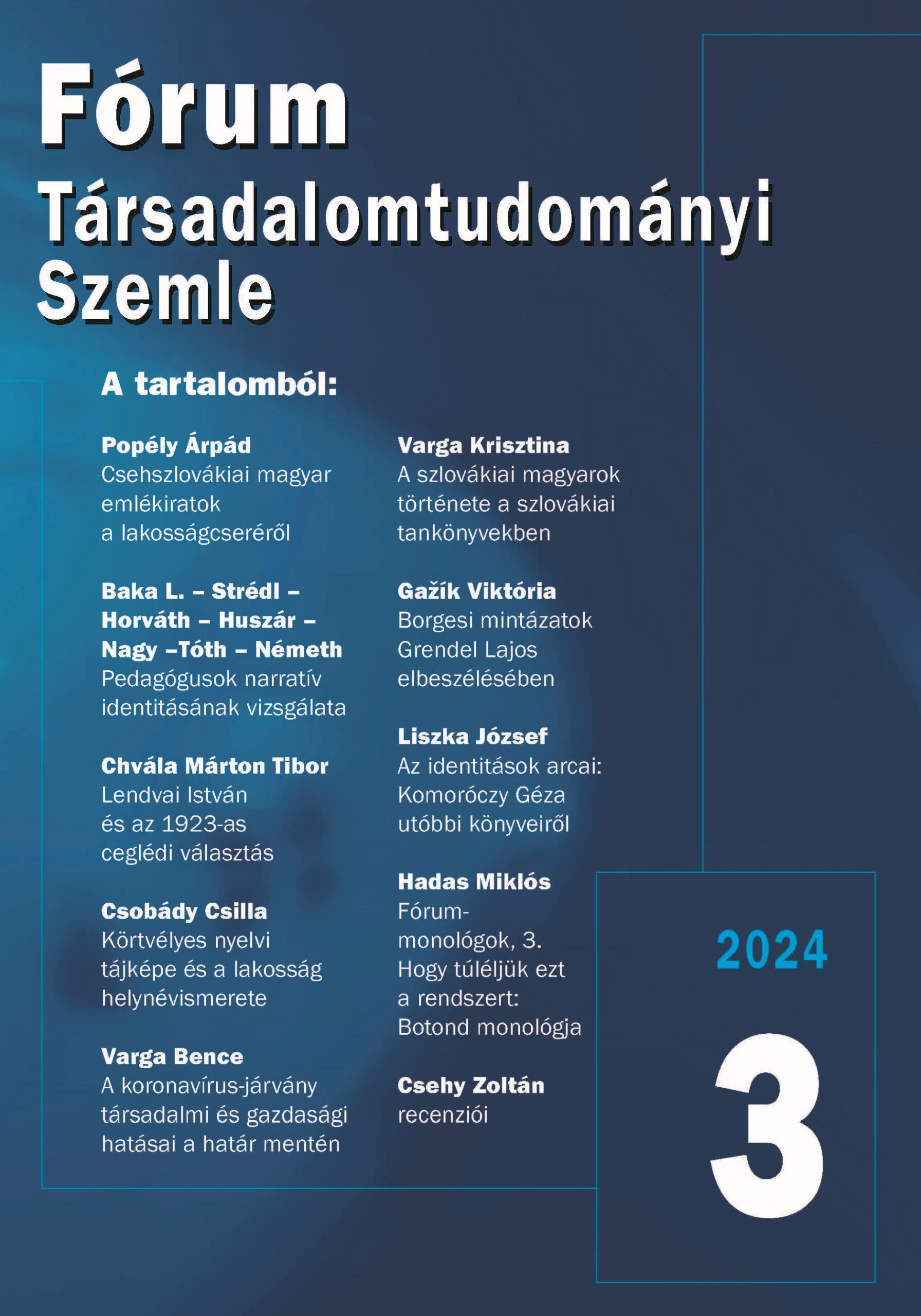János Bauko: Changing of forname fashion in Slovakia
Warning: Undefined variable $post in /data/4/3/4345b0b5-1481-458e-9362-50ccd424191c/forumdev.sk/sub/forumszemle/wp-content/themes/szemle/page-template-szemle.php on line 454
Warning: Attempt to read property "ID" on null in /data/4/3/4345b0b5-1481-458e-9362-50ccd424191c/forumdev.sk/sub/forumszemle/wp-content/themes/szemle/page-template-szemle.php on line 454
Warning: Array to string conversion in /data/4/3/4345b0b5-1481-458e-9362-50ccd424191c/forumdev.sk/sub/forumszemle/wp-includes/taxonomy.php on line 3720
Warning: Array to string conversion in /data/4/3/4345b0b5-1481-458e-9362-50ccd424191c/forumdev.sk/sub/forumszemle/wp-includes/category-template.php on line 1301
Following the 1989 change of regime, there were more factors that influenced the forename giving in Slovakia. After opening the state borders the rise of migration, both emigration and immigration has resulted in a dynamic change of given name stock that has mainly broadened by foreign language name elements. While before the change of regime, the loadedness of a name was bigger, strivings towards having more unique and rare names registered have been more powerful nowadays. Due to interethnic relationships the name stock is being enriched by given names of various foreign origins. There are also generational differences in name bearing: the younger generation uses many of those given names that are absent from the older generation’s name stock. The number of the registered given name variants is increasing; the foreign spelled names are also frequent. Movie and TV series characters often serve as inspiration for naming. More and more nicknames become registerable given names. Giving two forenames has become a new fashion in Slovakia in recent years. The members of minorities have a wider choice of names since they might choose from the minority as well as majority name stock. Among the members of the minorities, the name registration in mother tongue is increasing.
Minority name planning is one of the fields of applied onomastics, the tasks of which include propagation of the mother tongue name usage. The minority name planning deals primarily with the official use of personal, geographical and institution names. Publishing a Hungarian–Slovak forename dictionary (under preparation by me) may be one of the methods for the minority (mother tongue) name planning in Slovakia, which could serve as a guideline for mother tongue name planning, for registering the personal names of Hungarians living in Slovakia in their mother tongue. The study deals with the laws of the Slovak Republic concerning personal names, the name registers and name catalogues in Slovakia and Hungary used at registering, the importance of name planning as well as the features of the planned forename dictionary and the structures of its entries.
Katalin Misad: Demonstration of Language Variation in Hungarian Textbooks of First Language in Slovakia
Warning: Undefined variable $post in /data/4/3/4345b0b5-1481-458e-9362-50ccd424191c/forumdev.sk/sub/forumszemle/wp-content/themes/szemle/page-template-szemle.php on line 454
Warning: Attempt to read property "ID" on null in /data/4/3/4345b0b5-1481-458e-9362-50ccd424191c/forumdev.sk/sub/forumszemle/wp-content/themes/szemle/page-template-szemle.php on line 454
Warning: Array to string conversion in /data/4/3/4345b0b5-1481-458e-9362-50ccd424191c/forumdev.sk/sub/forumszemle/wp-includes/taxonomy.php on line 3720
Warning: Array to string conversion in /data/4/3/4345b0b5-1481-458e-9362-50ccd424191c/forumdev.sk/sub/forumszemle/wp-includes/category-template.php on line 1301
In my paper I analyse the question of the demonstration of language variation in Hungarian textbooks of first language intended for primary and secondary schools in Slovakia. This time I only deal with aspects and methods of treatment of language dialects and contact varieties in these textbooks. Summing up the experiences of the research, we can determine that the examined textbooks transmit almost exclusively theoretical information on language dialects, while most of the study-aids convey negative stereotypes about the contact varieties.
Anna Kolláth: Teacher Training and Bilingual Public Education
Warning: Undefined variable $post in /data/4/3/4345b0b5-1481-458e-9362-50ccd424191c/forumdev.sk/sub/forumszemle/wp-content/themes/szemle/page-template-szemle.php on line 454
Warning: Attempt to read property "ID" on null in /data/4/3/4345b0b5-1481-458e-9362-50ccd424191c/forumdev.sk/sub/forumszemle/wp-content/themes/szemle/page-template-szemle.php on line 454
Warning: Array to string conversion in /data/4/3/4345b0b5-1481-458e-9362-50ccd424191c/forumdev.sk/sub/forumszemle/wp-includes/taxonomy.php on line 3720
Warning: Array to string conversion in /data/4/3/4345b0b5-1481-458e-9362-50ccd424191c/forumdev.sk/sub/forumszemle/wp-includes/category-template.php on line 1301
This study presents the trends in bilingual education in Slovenia´s Prekmurje region in the last five years. It focuses on parallel bilingual teaching of reading and writing in minority Hungarian and majority Slovenian-language primary schools of the region (the method in Slovenian is referred to as HOP), and on the partial external differentiation of secondary schools – the latter concerns teaching of Hungarian as as a second language. These changes have a major impact on the education programmes of the Hungarian Language and Literature Department (Faculty of Arts) of the University of Maribor for being Slovenia´s only higher education institution with Hungarian as the language of instruction. As such, it must follow changes concerning Hungarian teacher training and adapt itself to new challenges. The study also points at anomalies manifested in the interactions of Hungarian (special purpose) language competencies of those participating in the teacher training process conducted in the Slovenian language, and that of pre-school teachers, teachers in primary and secondary schools with other than Hungarian-language specialization who participate in the region´s bilingual public education. Innovations, if consistently implemented, make bilingual education and contents of attitude toward the Hungarian language and culture more efficient and student-friendly, both for the minority and the majority.
Ildikó Bajcsi: The Official Hungary and the Sarló Movement. Reports on the Movement´s Leading Figures
Warning: Undefined variable $post in /data/4/3/4345b0b5-1481-458e-9362-50ccd424191c/forumdev.sk/sub/forumszemle/wp-content/themes/szemle/page-template-szemle.php on line 454
Warning: Attempt to read property "ID" on null in /data/4/3/4345b0b5-1481-458e-9362-50ccd424191c/forumdev.sk/sub/forumszemle/wp-content/themes/szemle/page-template-szemle.php on line 454
Warning: Array to string conversion in /data/4/3/4345b0b5-1481-458e-9362-50ccd424191c/forumdev.sk/sub/forumszemle/wp-includes/taxonomy.php on line 3720
Warning: Array to string conversion in /data/4/3/4345b0b5-1481-458e-9362-50ccd424191c/forumdev.sk/sub/forumszemle/wp-includes/category-template.php on line 1301
The study deals with the leftist organization of young Hungarian intellectuals in Czechoslovakia between the two world wars. Based on newly disclosed diplomatic and police sources, the paper mainly focuses on the movement´s official judgement by the Hungarian state. Horthy´s conservative Hungary took a critical view on the movement from the very beginning. After Sarló´s reorientation toward Marxism, the country regarded the leaders of Sarló as enemies, and kept them under constant surveillance. The study based on source analysis, has an ambition to provide background information to the realistic assessment of Sarló´s short-term leftist and communist orientation. Hungary´s official distrust toward young people engaged in the movement was an important contributing factor to that too.
István Gergely Szűts: The Cultural and Business Activities of the Madách Saloon in Bratislava, Based on the Records of an Alliance Enterprise (1942–1944)
Warning: Undefined variable $post in /data/4/3/4345b0b5-1481-458e-9362-50ccd424191c/forumdev.sk/sub/forumszemle/wp-content/themes/szemle/page-template-szemle.php on line 454
Warning: Attempt to read property "ID" on null in /data/4/3/4345b0b5-1481-458e-9362-50ccd424191c/forumdev.sk/sub/forumszemle/wp-content/themes/szemle/page-template-szemle.php on line 454
Warning: Array to string conversion in /data/4/3/4345b0b5-1481-458e-9362-50ccd424191c/forumdev.sk/sub/forumszemle/wp-includes/taxonomy.php on line 3720
Warning: Array to string conversion in /data/4/3/4345b0b5-1481-458e-9362-50ccd424191c/forumdev.sk/sub/forumszemle/wp-includes/category-template.php on line 1301
József Liszka: Saint Peter´s Violin or The Dance among Thorns. From Children´s Folklore to Auschwitz?
Warning: Undefined variable $post in /data/4/3/4345b0b5-1481-458e-9362-50ccd424191c/forumdev.sk/sub/forumszemle/wp-content/themes/szemle/page-template-szemle.php on line 454
Warning: Attempt to read property "ID" on null in /data/4/3/4345b0b5-1481-458e-9362-50ccd424191c/forumdev.sk/sub/forumszemle/wp-content/themes/szemle/page-template-szemle.php on line 454
Warning: Array to string conversion in /data/4/3/4345b0b5-1481-458e-9362-50ccd424191c/forumdev.sk/sub/forumszemle/wp-includes/taxonomy.php on line 3720
Warning: Array to string conversion in /data/4/3/4345b0b5-1481-458e-9362-50ccd424191c/forumdev.sk/sub/forumszemle/wp-includes/category-template.php on line 1301
It is a cliché to say that the Holocaust did not start with the railway cars, but much earlier, by words said and heard. Scientific literature and journalism generally assumes that it was the anti-Semitic public discourse at the beginning of the 20th century and, among others, the laws sprouting from it. In the opinion of the author of this study, this has much deeper psychological roots which, as far as we can track it, stretch back at least to the Middle Ages. Children´s folklore—various mocking verses, games and part of folk tales told to children (too)—seem to confirm this. This study only highlights a small slice of this long tradition, and it examines the roots and the Central and Eastern European afterlife of the tale called The Dance among Thorns (Der Jude im Dorn; ATU 592) also included in the Grimm brother´s famous tale collection entitled Children´s and Household Tales (Kinder- und Hausmärchen). The study pays particular attention to the role of this tale played mainly in the Hungarian, Slovak and Czech folklore.



